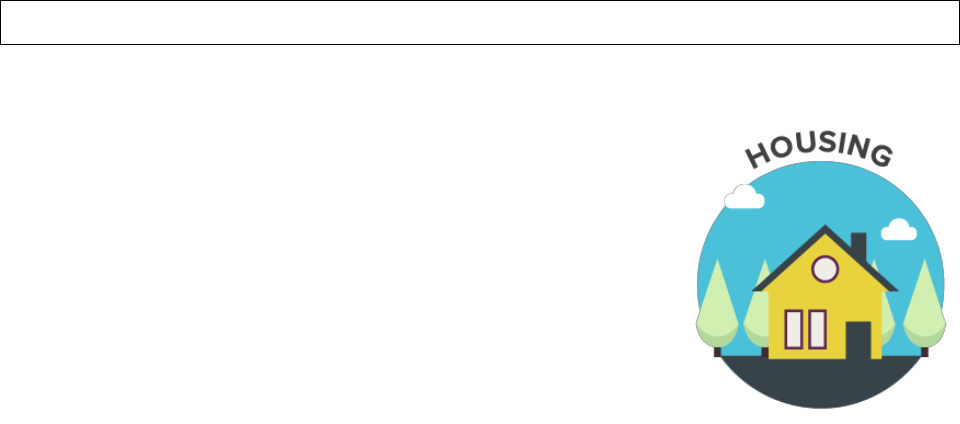
SAM Housing Plan Course | LWVT REVIEW | 5/31/22
1
HOUSING PLAN COURSE: TABLE OF CONTENTS
INTRODUCTION
• Housing: A Big Expense and a Potential Setback
SIZE UP YOUR HOUSING SITUATION
• Calculate Your Housing Costs
• Rent and Mortgage Guidelines
• Know Your Debt-to-Income Ratio
ANALYZE YOUR CIRCUMSTANCES
• How Much House Do You Need?
• Why Rent?
• Why Own?
• Estimate Moving Costs
• Calculate Cost of Living
MAKE YOUR HOUSING PLAN — I WANT TO RENT
• Get Ready to Rent: Upfront and Recurring Costs
• Renter Rights and Responsibilities
• Landlord Rights and Responsibilities
• Types of Lease Agreements
• Renters Insurance
SAM Housing Plan Course | LWVT REVIEW | 5/31/22
2
MAKE YOUR HOUSING PLAN — I WANT TO OWN
• Why Buy?
• How Mortgages Work
• What To Look For in a Lender
• Homeowners Insurance
• Managing Your Mortgage
HOUSING RESOURCES

SAM Housing Plan Course | LWVT REVIEW | 5/31/22
3
Why Take This Course?
Do you ever wish you knew more about personal finance? No
matter where you are in your financial journey, there always
is more to learn. SAM’s free online courses are not intended
as financial advice, but as a starting point to raise awareness,
to increase skills and knowledge related to personal finance,
and to guide you to helpful resources.
Research shows that financial education is most effective
when it is relevant to a decision you are faced with right now.
This course covers:
• Analyzing current housing expenses and opportunity costs.
• Tips for how to decide whether to rent or own.
• Preparing your finances to rent or buy a home.
Disclaimers
Throughout this course, any reference to a specific company, commercial product, process or
service does not constitute or imply an endorsement or recommendation by State of Vermont
LiveWell Vermont Wellness Program, Smart About Money (SAM) or the National Endowment for
Financial Education.
These courses and related resources may be used only for nonprofit, noncommercial educational
purposes. LiveWell Vermont and SAM make every effort to ensure the information in these
courses is current, but, over time, new developments as well as legislative and regulatory
changes may date this material. If you discover inaccurate information, please email

SAM Housing Plan Course | LWVT REVIEW | 5/31/22
4
INTRODUCTION
On the Move
Change is inevitable. As you age, your housing preferences will change too. While United States Census
data show that most Americans move only a couple times after age 45, those later-in-life housing
decisions can be some of the most financially challenging if you’re unprepared.
Whether you are just starting out on your housing journey or you are looking to downsize for
retirement, there are some basic questions to consider. This course will help you assess your housing
needs and consider what it would take financially to upgrade to the home of your dreams.
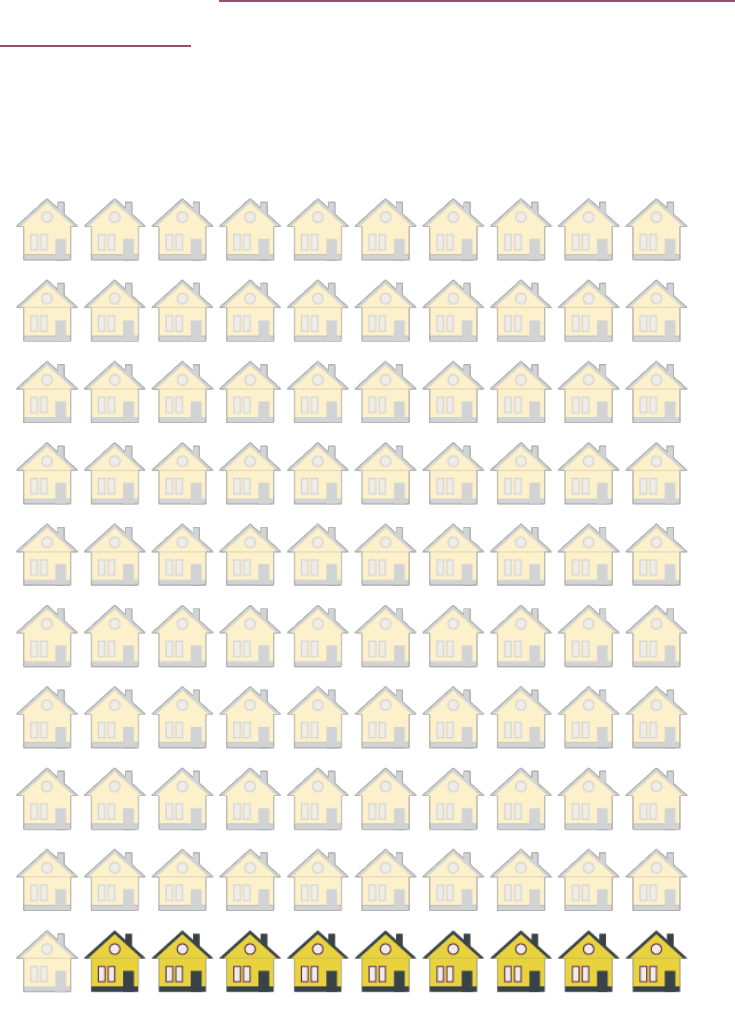
SAM Housing Plan Course | LWVT REVIEW | 5/31/22
5
Housing: A Big Expense and a Potential Setback
Owning a home still is the cornerstone of the American Dream, but the U.S. rental market has boomed
in recent years. More renters means more competition for fewer units and higher rents overall.
In 2014, the national vacancy rate was just 7.6 percent (down from an average 9 to 10 percent in the
previous decade) and rents rose 3.2 percent — twice the rate of inflation. In the cities hit hardest by
rising living costs, rents spiked 10 percent. This has increased the share of households that are defined
as “cost-burdened,” which means that they are spending 30 to 50 percent of their gross income on
housing.
A 7.6 percent vacancy rate means that out of 100 percent of the rental properties in the United States,
92.4 percent are currently occupied. Put another way, if 100 renters went looking for an apartment in a
city with an 8 percent vacancy rate, only 8 out of 100 would be able to find an available apartment.

SAM Housing Plan Course | LWVT REVIEW | 5/31/22
6
Make a “SAM” Plan
You make decisions every day – some are easy but others require
complex thought and planning. When you decide to make a
change in your housing or if life circumstances prompt you into
making that change, you want to take a methodical approach
using the SAM action steps.
Are you satisfied with your current living arrangement?
Think about where you want to live next. What would
you hang on to or change? What are you current
housing costs?
Does your current housing situation align with your
preferences? Can you afford your current living
expenses? Are you financially ready to change your
housing situation?
If you want to change your housing situation, what
adjustments need to be made? What is your long-range
game plan to adjust your housing needs as your life
circumstances change?
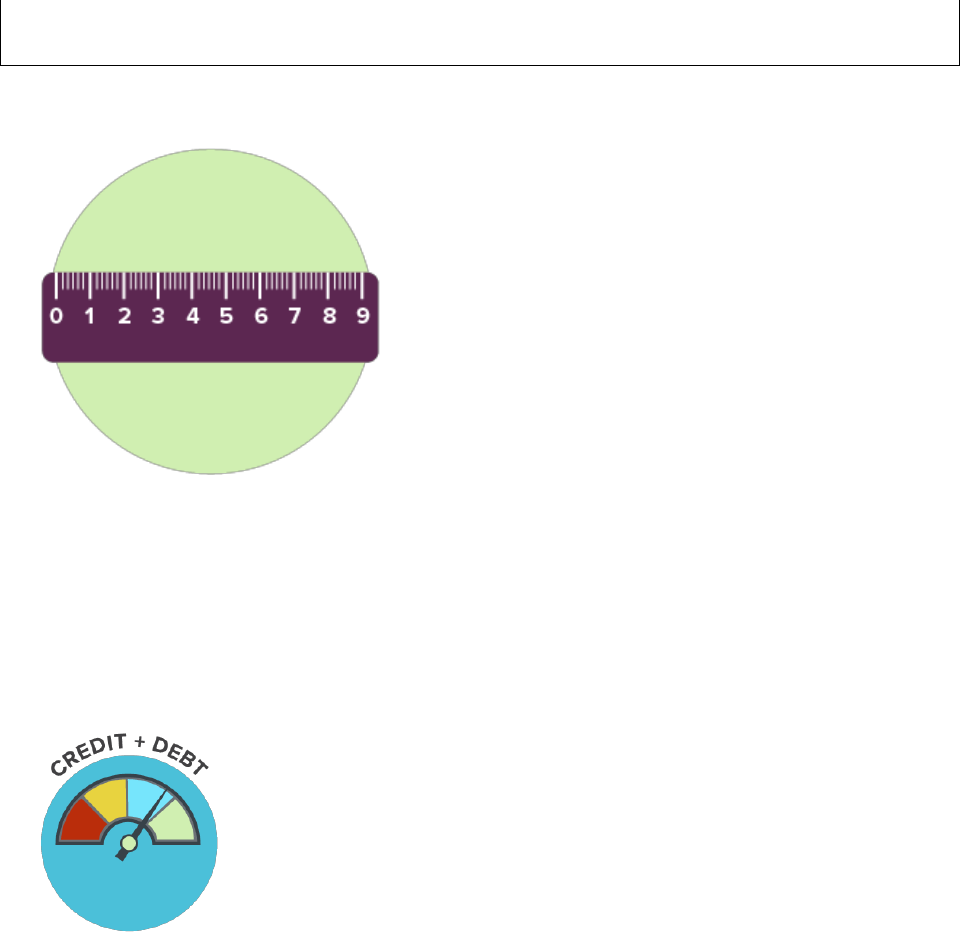
SAM Housing Plan Course | LWVT REVIEW | 5/31/22
7
SIZE UP YOUR HOUSING SITUATION
Lenders and landlords will use different guidelines, but they
all will want to know the same thing: Can you afford the
payment and will you make it on time? They will look at the
following to determine your creditworthiness:
✓ Income from all sources
✓ Financial obligations – including other loans, credit
cards, leases, etc.
✓ Credit history
✓ Checking and savings account balances
✓ Debt-to-income ratio (the percentage of your gross
income taken up by recurring financial obligations such as
loans, leases, revolving credit, child support, etc.)
What Makes a Good Borrower?
Lenders are looking for the same qualities that you look for when you lend someone something. If a
friend borrows a book, you hope they return it in good condition. If you lend a family member money,
you hope that he or she will pay you back on time, according to terms that you both agree on.
Dig deeper with SAM’s Credit and Debt Basics Course.
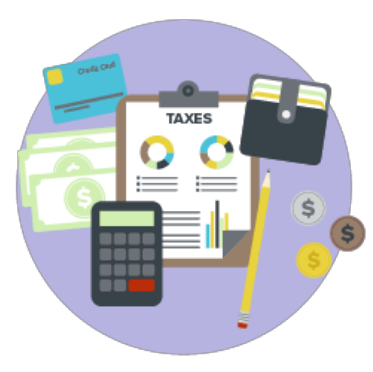
SAM Housing Plan Course | LWVT REVIEW | 5/31/22
8
Calculate Your Housing Costs
There are varying guidelines for how much to spend on
housing, but it all begins with your income. How much you
make will determine what you can afford.
To calculate your housing costs:
• Total all of your monthly housing expenses
o If you are renting, include your rent, utilities and renters insurance.
o If you own, include your mortgage, property taxes, homeowners’ insurance and
homeowners’ association (HOA) fees.
• Divide this figure by your gross monthly income (before taxes and any other adjustments).
• The amount, expressed as a percentage, shows how much of your earnings are used to pay for
housing.
For example:
Monthly housing expenses = $1,300
Monthly gross income = $4,000
1,300 / 4,000 = 0.325
(move the decimal two places to the right)
= 32.5 percent
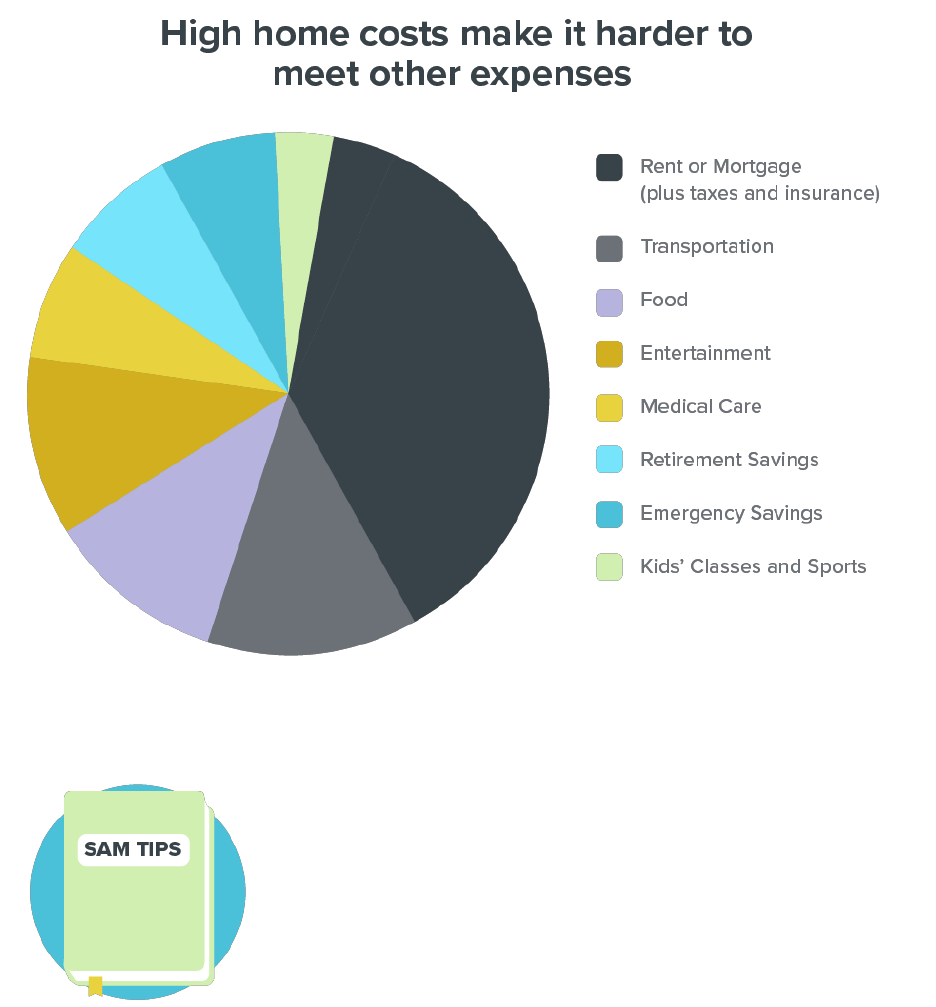
SAM Housing Plan Course | LWVT REVIEW | 5/31/22
9
Are You Cost-Burdened?
If you spend 30 percent or more on housing costs, you are considered cost-burdened, meaning that you
could have problems paying other bills due to high housing expenses.
Think of it this way: If 30 to 50 percent of your gross paycheck (income before taxes) is taken up by rent
and mortgage costs, that leaves only two-thirds to half of your income left to cover other things.
To figure out what 30 percent of your monthly income is, multiply your
gross income by 0.30.
$4,000 (monthly gross income) x 0.30 (30 percent with the decimal
moved two places to the left) = $1,200.
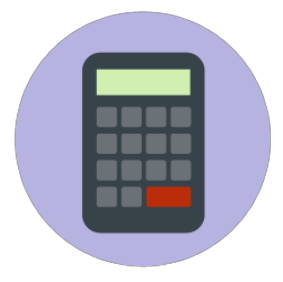
SAM Housing Plan Course | LWVT REVIEW | 5/31/22
10
Know Your Debt-to-Income Ratio
In addition to your income, mortgage lenders calculate your debt-to-
income ratio (DTI) to estimate the likelihood that you will be able to
repay your mortgage loan. Your DTI shows how much you owe (your
debts) compared to how much you make (your income).
Even if you have no plans to buy a home, it still can be helpful to
calculate your debt-to-income ratio for a better understanding of
how your debt impacts your ability to meet other obligations.
To calculate your DTI:
• Total all of your monthly debt – include your mortgage, all loans (home equity, car, student,
etc.), the minimum monthly payments on all credit cards, and any other recurring debts for child
support, alimony, personal loans, etc.
• Divide this figure by your gross monthly income (before taxes and any other adjustments).
• The amount, expressed as a percentage, is your debt-to-income ratio. It shows the percentage
of your earnings that are used to pay your debts.
For example:
Monthly debt obligations = $800
Monthly gross income = $4,000
800 / 4,000 = 0.20
(move the decimal two places to the right)
= 20 percent

SAM Housing Plan Course | LWVT REVIEW | 5/31/22
11
Rent and Mortgage Guidelines
As a general guideline, it is recommended that you keep your
rent (rent burden) or mortgage payment below 40 percent of
your gross (pretax) annual income.
This is just a guideline, and your situation is unique. Even if
you currently spend more than 40 percent of your income on
housing and have no difficulty paying off debts or meeting
other obligations, you still might explore lowering your
housing costs for other reasons — such as paying off your
debts faster or saving more money for emergencies,
retirement and investments. Once your current needs are
met, it’s time to think about the needs of the “future you.”
Mortgage Lender Guidelines
When you apply for a home loan, lenders look for your housing costs (principal, interest, property taxes,
and homeowners’ insurance — or PITI) to be around 28 percent of your gross income, lower than the 40
percent guideline. The other common industry standard is for your debt-to-income ratio (i.e., PITI plus
consumer debts) to be no more than 36 percent.

SAM Housing Plan Course | LWVT REVIEW | 5/31/22
12
Check Your Credit
Mortgage lenders and landlords want to make sure you
will be able to pay your housing obligations. To make this
determination, they will look at your credit report and
credit score. Each year, you are entitled to one free copy
of your credit report from each of the three credit
reporting agencies: Experian, Equifax and TransUnion.
You can request your credit reports at
AnnualCreditReport.com.
What’s in a Credit Report?
A credit report serves as your credit reference. Credit
reporting companies provide information about your
credit history so that other potential lenders can decide to lend to you or not. Your credit report
includes information about:
• Where you live and work
• Amounts, credit limits and balances of past and current credit accounts
• Your payment history, including late payments to other creditors
• Any unpaid debts, including those that have gone to collections
• Bankruptcies
Correct Errors on Your Credit Report
Part of the process of maintaining good credit is watching for errors on your
credit report that are not your fault. Some errors are honest mistakes, while
others can be the result of a thief stealing your identity. Learn about
correcting credit report errors in SAM’s Credit and Debt Basics Course.

SAM Housing Plan Course | LWVT REVIEW | 5/31/22
13
Know Your Credit Score
Lenders and landlords use your credit score to estimate
how risky it would be to lend you money. Your credit score
is a simple way of representing your creditworthiness
based on your past and present actions.
Different lenders use different scoring methods, and your
score can change over time. Your credit score will reflect:
• How much credit you have used compared to what is
available for you to use
• How often you apply for new credit
• How long you have used credit
• The types of accounts you have and the number of accounts you have
• How you have used credit in the past
• Any legal proceedings against your credit
A good score depends on the scoring model that is used, but a majority of lenders will look at your FICO
score.
Improve Your Credit
To keep a good credit rating or to improve your credit:
✓ Pay your bills on time, all the time – even if it’s just paying the minimum due.
✓ Use existing credit wisely to establish a good payment history.
✓ Don’t hit the credit limit — pay down any high debt.
✓ Avoid taking out new credit when you don’t need it.
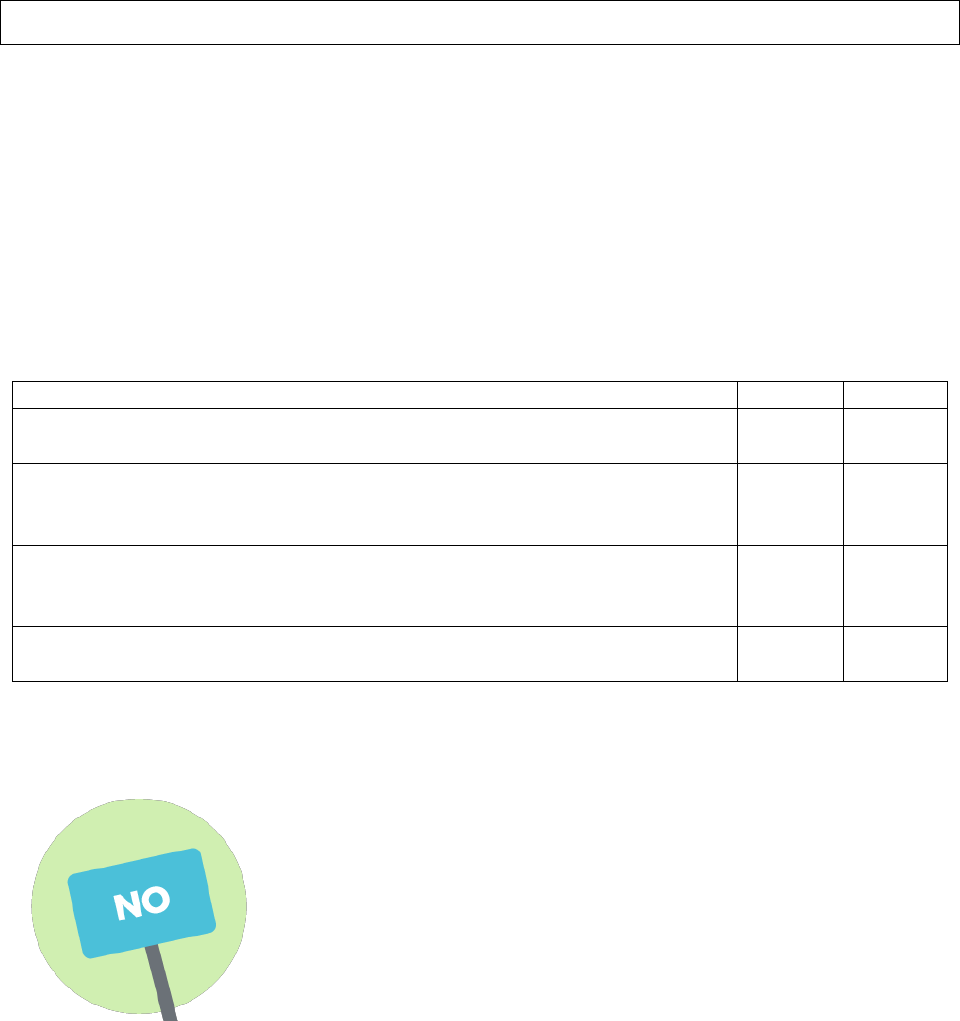
SAM Housing Plan Course | LWVT REVIEW | 5/31/22
14
ANALYZE YOUR CIRCUMSTANCES
Can You (And Should You) Afford It?
Just because you can do something doesn’t mean you should do it. Your parents might consider buying a
home a no-brainer. Your friends might want to live in a trendy neighborhood. But these are big
decisions. It is important to make sure that you are coming to sound conclusions on your own. Ideally,
your living situation should bring you joy, security and comfort — not stress and worry about paying
your bills.
Gut-Check Time
The Financial Planning Association (FPA) recommends asking yourself the following four questions
before you decide to buy a home. These also can apply to renting your next home.
Question
Yes
No
Is your credit in good shape? Lenders and landlords will want to analyze your
ability to pay your mortgage or lease.
Do you have a steady job history? Most lenders and landlords will want to see
evidence of steady employment for two years. You will be asked to explain
gaps in your employment history.
Can you really afford to make the monthly payments? Take into account all
your monthly debts and the recommended guidelines for mortgages and rent
payments.
Have you saved for a down payment, closing costs, move-in costs or other
fees?
If you answered “no” to any of the above questions, the FPA suggests you
wait and give yourself more time to get financially ready to buy or rent
your home.

SAM Housing Plan Course | LWVT REVIEW | 5/31/22
15
How Much House Do You Need?
Not everyone would choose to live in a mansion, even if they had the
money. Some people prefer cozier spaces and find big houses
overwhelming.
Some people love having lots of room inside, and don’t mind just a small
patch of yard, while others would give up square footage inside for a big
plot of land.
Think about all the members of your household — will your kids need separate rooms soon? Are you
tired of making your in-laws sleep on the sofa when they visit? Have you always wanted a separate
dining room or detached garage?
Activity
Make a list of the types of space, rooms, storage and outdoor areas that you prefer. Don’t hold back at
this point — this is just to get a clear sense of your ideal situation. But be somewhat realistic as well. It’s
fun to fantasize about your dream house, but it’s more useful to brainstorm what type of home would
make you feel secure and comfortable, allowing you and your family to thrive.

SAM Housing Plan Course | LWVT REVIEW | 5/31/22
16
What’s In a Neighborhood?
Whether buying or renting, when you move to a new area, you are
becoming part of a larger neighborhood community where you will
want to feel at home.
What makes a good neighborhood? Here are a few things to
consider:
• Crime rate – Check out whether crime rates are increasing or
decreasing in your proposed neighborhood. RAIDS Online offers a
quick crime mapping tool, but the most reliable source will be the
local police department.
• Schools – Families with children will want a good school and school district. Check out
GreatSchools.org for more information about the district and particular school your child might
attend.
• Transportation – Is there nearby access to public transportation? Even those living in suburban
areas may need public transportation if the car breaks down.
• Commute time – As of 2013, the U.S. Census reported that 86 percent of U.S. workers
commuted to work by car, and 3 out of 4 drove alone. Long commute times can impact your
pocket book (gas), your health (cardiovascular and metabolic health), and your general level of
satisfaction.
• Shopping, restaurants and entertainment – Unless you live in a rural location, nearby amenities
for grabbing a bite or seeing a show can be an important consideration.
• Lifestyle match – Consider your life stage. Single professional? Perhaps a downtown condo with
access to bars and restaurants. Retiring? Maybe you want a patio home where someone else
handles yard maintenance. Married with children? You might want a suburban neighborhood
with other families.
• Weather and climate – If you’re a fan of the outdoors, you’ll want a climate suitable to your
adventures. Use the Weather Channel to check out regional forecasts for your potential new
locations.
• Health care – Check out access to health facilities (hospitals, urgent care, doctors) as well as
recreational facilities.
Activity
Identify a neighborhood where you think you would like to live. If possible, visit that neighborhood and
envision what your life might be like if you lived there. Which grocery store would you go to? How hard
would it be for you or your guests to find street parking? Are there parks or trails nearby where you
would walk your dog? Is the neighborhood bike-friendly? Make a list of your “must-haves” and “nice-to-
haves” in your next home’s location.

SAM Housing Plan Course | LWVT REVIEW | 5/31/22
17
Prepare for Expected (and Unexpected) Life
Changes
Whether you are a homeowner or a renter, unexpected events will
test even the best-laid spending plans. In addition to life’s surprises,
your housing needs might change in more predictable ways, for
example, as children are born and move out, as parents age and as
you prepare for your own retirement.
Build Up Your Emergency Fund
Having a monthly budget for your new place is one thing, but what happens when you suddenly need a
new furnace or your car breaks down the week after you move?
Illness and employment can be equally unpredictable. If you were laid off or temporarily disabled, how
long could you pay your bills without borrowing or relying on credit cards? Research shows that many
Americans could not cover a $400 expense out of pocket.
Jeronna’s Story
Jeronna Bolden thought she had done everything right, until the job she
had been promised fell through and she found herself homeless with her
6-year-old son.
Dig deeper with SAM’s Emergency Fund Plan Course.

SAM Housing Plan Course | LWVT REVIEW | 5/31/22
18
Housing Needs in Retirement
As the Baby Boomer generation ages, the average age of Americans
is rising as well, and that means more people transitioning out of
their family homes and into more manageable living situations for
their later years.
Be realistic and get a clear picture of your finances before rushing to
move. You might consider:
Downsizing
If you no longer need a large home, you could downsize your accommodations. That may mean moving
to a smaller traditional home or renting, which could mean less overall maintenance and cost.
Retirement Community
If you want little or no maintenance responsibilities, you could move to a retirement community or a
condominium. The downsides to shared-living arrangements such as these are homeowners’ association
fees, which typically increase over time to keep pace with inflation and generally are not tax-deductible.
Housing is just one aspect of your retirement
plan. Visit MyRetirementPaycheck.org for more
on how to pay yourself in retirement.

SAM Housing Plan Course | LWVT REVIEW | 5/31/22
19
Why Rent?
Homeownership is not for everybody. If your job isn’t stable or if you travel often, purchasing a home
may not be worth the expense. And, if you have credit problems, you are living paycheck to paycheck or
if you find it difficult to prove your income, it may be tough to qualify for a mortgage. If you don’t want
the responsibility of home maintenance and you’re not sure of your future plans, renting may be an
excellent choice.

SAM Housing Plan Course | LWVT REVIEW | 5/31/22
20
Renters: Beware of Missed Opportunity
Costs
Before you sign your next lease, consider some of the potential
opportunity costs of renting rather than owning:
• By renting, you miss the opportunity to build equity in a home. When you buy a home, every
mortgage payment goes toward paying off some of the money that was borrowed
(principal). Home equity is the difference between the market value of a home and its
outstanding debt balance. It also is considered one of the most effective ways to build up
savings.
• When you rent, your payments go to helping the landlord pay his or her mortgage, not to
building your equity.
• Renters miss out on income tax write-offs. Homeowners can deduct mortgage interest and
property taxes on their annual tax returns.
As rents increase, you might find that monthly mortgage payments are less than monthly rent,
depending on your circumstances. Homeowner tax advantages might even make it possible for you to
buy more home than you rent for the same monthly payment. However, keep in mind that buying a
home typically requires a large down payment and good credit history.
Help for Homeowners
There are programs available to help potential homeowners. Check out the Resources section of this
course for some places to start.
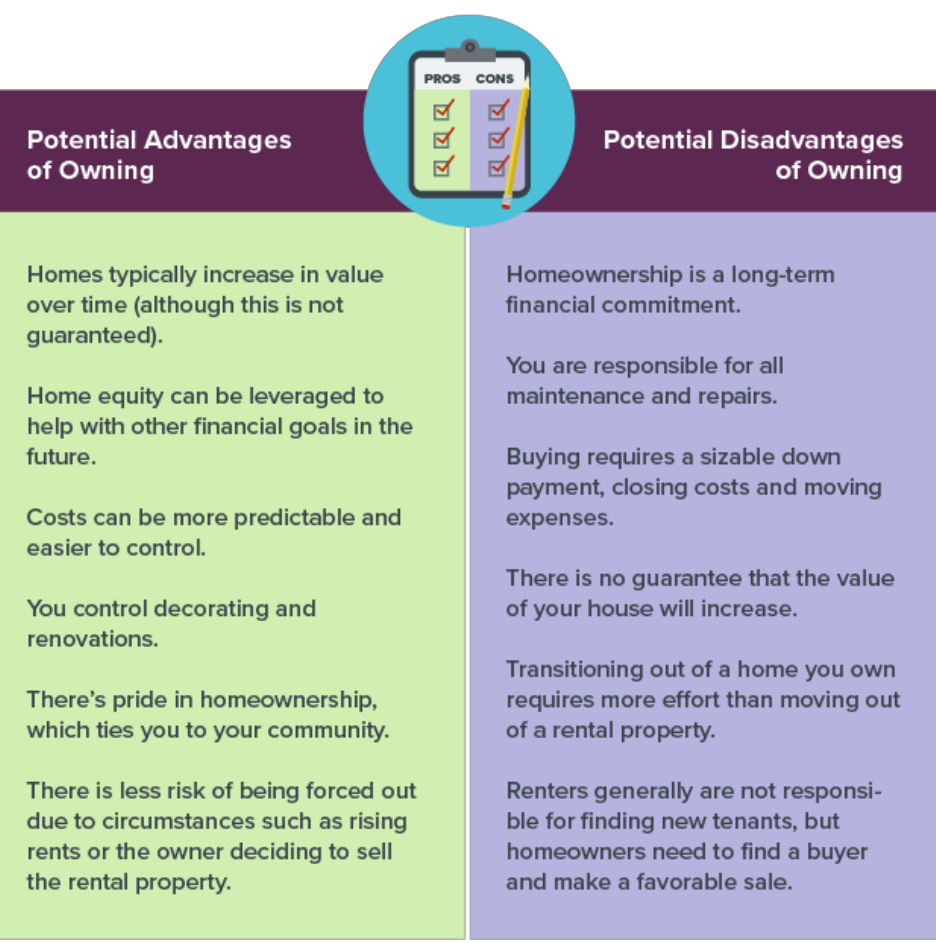
SAM Housing Plan Course | LWVT REVIEW | 5/31/22
21
Why Own?
Owning a home gives you several important financial benefits, including equity, tax write-offs and the
opportunity to leverage a small amount of your own money to make an investment of much larger
value.

SAM Housing Plan Course | LWVT REVIEW | 5/31/22
22
Estimate Moving Costs
Moving to a new place or new city can open up new opportunities,
but keep in mind that moving is, in itself, expensive and often
stressful.
The True Cost of Your Move
Whether you plan to rent or buy your next home, plan ahead to cover
moving costs. Every situation is different, so not all of these will apply.
Some costs apply to both renters and buyers.
Don’t Count On That Security Deposit
If you are hoping to apply the security deposit from your current place to the deposit on your next
apartment, don’t count on it. Check your lease, but most landlords have a grace period of at least 30
days to return your deposit to you. And even then, you are not guaranteed to get the total amount back.
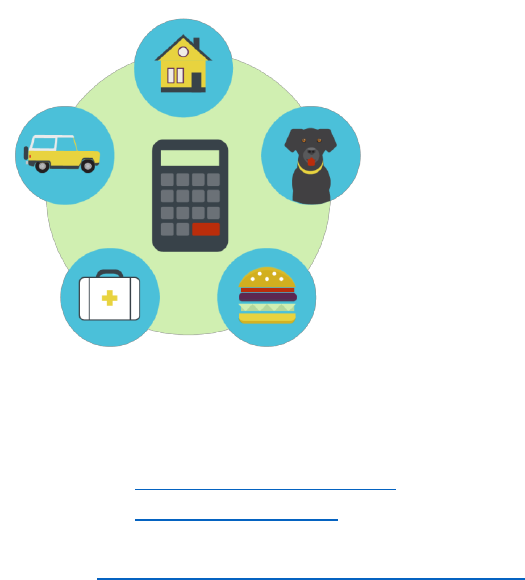
SAM Housing Plan Course | LWVT REVIEW | 5/31/22
23
Calculate Cost of Living
Moving to a new city can be exciting and invigorating, but a
change of scenery also can come with an increase in cost of
living.
Before committing to relocate — even if you have a job
offer that pays more — consider the cost of living in the
new location. Daily expenses such as food, parking and
public transit can vary dramatically depending on where
you live.
Cost-of-Living Calculators
• The CNN Cost-of-Living calculator compares how far your salary will go in U.S. cities.
• The Living Wage Calculator estimates the cost of living, including some common expenses in
a particular community.
• Sperling’s Best Places Cost of Living Comparison lets you compare the cost of living from one
city to another using your current income.
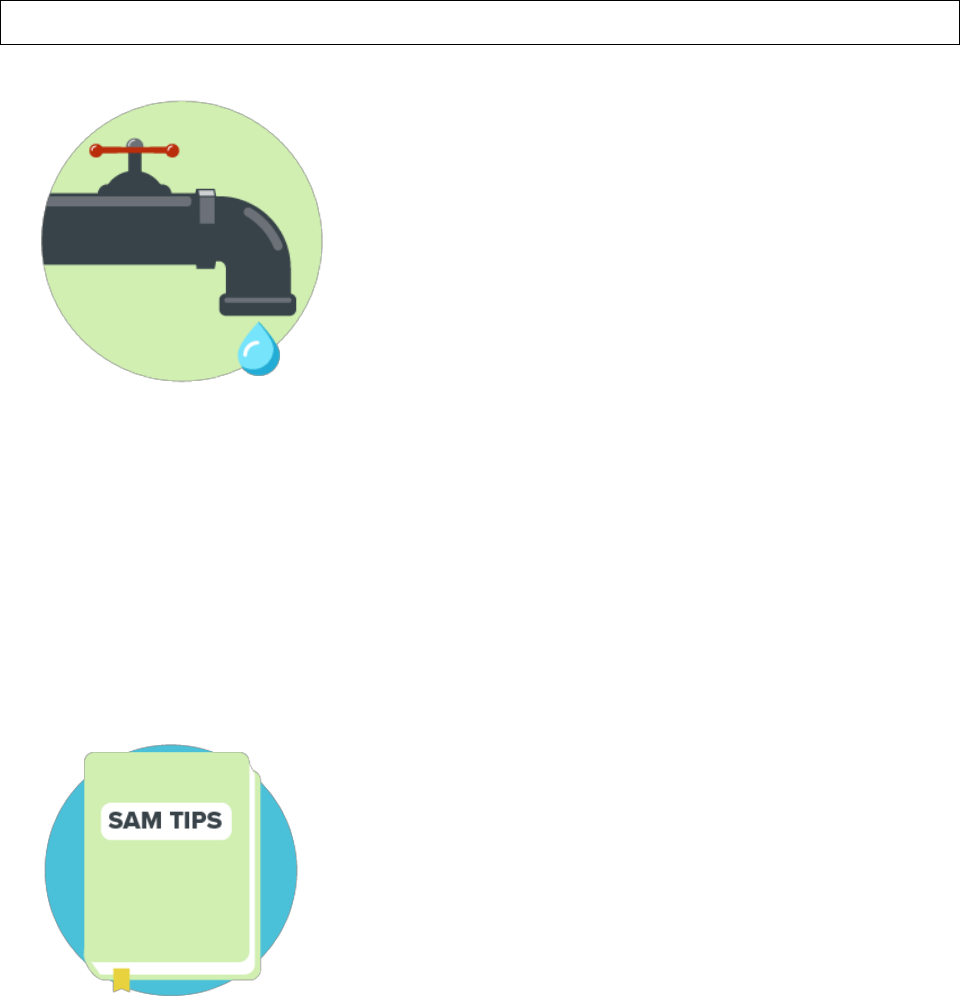
SAM Housing Plan Course | LWVT REVIEW | 5/31/22
24
MAKE YOUR HOUSING PLAN: I WANT TO RENT
Get Ready to Rent: Know What You’re On the
Hook For
Before you sign a lease, make sure you and your budget can
support additional expenses beyond rent.
Check with your potential landlord to be sure what is covered in
the rent and what is extra, such as:
• Parking
• Utility fees (electricity, gas, water)
• Phone service
• TV service
• Internet service
• Trash pickup
• Common area use fees
• Renters insurance to protect the personal items in your rental unit from theft, fire, storms and
other damage
Don’t be afraid to ask what average amounts were paid by the
previous tenant for utilities such as gas, water and electricity. You
can control how high you turn up the A/C, but you can’t control high
energy costs due to poor insulation and drafty windows.

SAM Housing Plan Course | LWVT REVIEW | 5/31/22
25
Ali’s Story
“I’ve always dreamt of living in my first apartment, all decorated
cute, and something that when someone came to visit, I could
be proud of,” says Ali Kvidt, a freelance photographer and nanny
who lives in Minneapolis.
But for Ali, the reality of planning, preparing and paying for the
move to her first place was more complicated than she
expected.
One of the biggest things that took her by surprise was the extra
cost she hadn’t anticipated.
“Of course, I always knew that the deposit, application fee and electricity would need to be
paid,” she says. “But I guess I never took into account that my Internet, cable, water, heat and
trash, especially, would need to be paid. I guess I always figured that came with the rent.”
Ali could’ve let herself get tripped up by the extra expenses or ignore them completely — throwing
them on a credit card like they were no big deal. Instead, she planned ahead, saved up, and successfully
made the big move.

SAM Housing Plan Course | LWVT REVIEW | 5/31/22
26
Research Rental Rates
Rental rates are soaring because of increased demand.
When the housing market dipped in 2008, many
homeowners were displaced. Plus, saving money for a
down payment on a home has gotten harder with
more people struggling to pay down student loan debt
and save for retirement.
What is the average cost for a rental in your state?
Let’s find out:
• Think about the state in which you live and mentally calculate what you think the average price
is for a rental unit in your state.
• Now use this interactive map from MyApartmentMap.com to see what the actual average is for
the state in which you live.
Were you near the actual amount? Are you surprised? Before you shop for a rental home in your
specific area, having information on average rental prices, especially depending on the size and number
of bedrooms, can be helpful.

SAM Housing Plan Course | LWVT REVIEW | 5/31/22
27
Renter Rights and Responsibilities
You have certain rights and responsibilities as a renter. Likewise, your landlord has her own rights and
responsibilities. These can vary by state and situation, so it’s important to know what applies in your
case.
Your Rights
Generally speaking, you have a right to a habitable environment:
• Heating and air conditioning must work.
• Toilets and hot water heater must work.
• Door locks must work.
• The roof must be in a good condition (e.g., it should not leak).
• Windows must be in working order and not sealed.
• Appliances that are supplied (like the refrigerator, stove and garbage disposal) must be in
working condition.
Most of these rights fall under the “implied warranty of habitability” which is a warranty (implied by law
simply by leasing the property) that the landlord promises that the property being leased is safe and
suitable to be lived in. Breaking this implied warranty can be grounds for the renter to break the lease,
and in some instances, to sue the landlord.
Learn More About Renters Rights
The U.S. Department of Housing and Urban Development (HUD) offers
state-by-state assistance for renters to learn more.
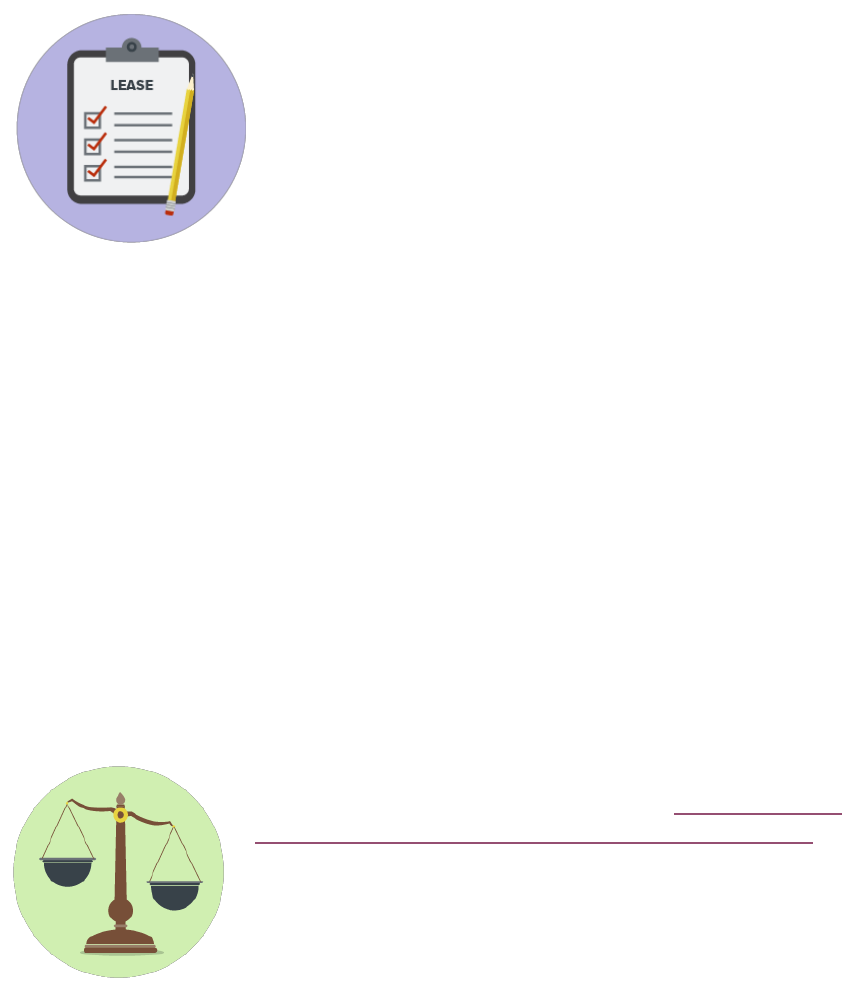
SAM Housing Plan Course | LWVT REVIEW | 5/31/22
28
Renter Responsibilities
Your responsibilities as a renter will vary too. It is important to
understand your rental agreement so that you know exactly what your
responsibilities are, especially concerning maintenance and repairs. For
most renters, these responsibilities will be addressed in the lease
agreement:
• You will maintain the property in a clean and habitable condition.
• You will inform the landlord when issues arise that could harm the value of the property.
• You will pay for any repairs due to your negligence or misuse of the property.
When You Can’t Pay Rent
Most landlords will not evict you if you are a bit late paying your rent, although you may be charged a
late fee. But if you find that you cannot pay your rent or your income is drastically reduced, you need to
be proactive about contacting your landlord. The important thing is to communicate.
• Ask to negotiate a late payment in advance of your payment date.
• Offer to pay some of the rent by the due date.
• Explain your circumstances and how you expect to resolve them so that your rent will be paid on
time in the future.
It pays to know the tenant rights in your state. Start with the U. S.
Department of Housing and Urban Development’s state portal.

SAM Housing Plan Course | LWVT REVIEW | 5/31/22
29
Landlord Rights and Responsibilities
Just as your rights as a tenant vary by state, so do the rights and
responsibilities of your landlord. Your lease should define exact rights of
the landlord, which is why it’s important to understand the lease before
you sign.
Landlord Rights
• The right to collect rent. Simply by the fact that you are renting, your landlord has the right to
collect rent and any prearranged late fees for overdue rent payments.
• The right to raise your rent according to your lease agreement.
• The right to evict. Your landlord has the right to evict you, especially if you do not pay your rent.
State laws vary regarding eviction proceedings, but most will allow the landlord to collect back
rent and any legal costs associated with an eviction.
Landlord Responsibilities
• The responsibility to keep the property safe. This covers basic safety like proper wiring to
prevent electrical issues, flooring that does not cause one to trip, etc.
• The responsibility to not discriminate. This is covered by the Fair Housing Act.
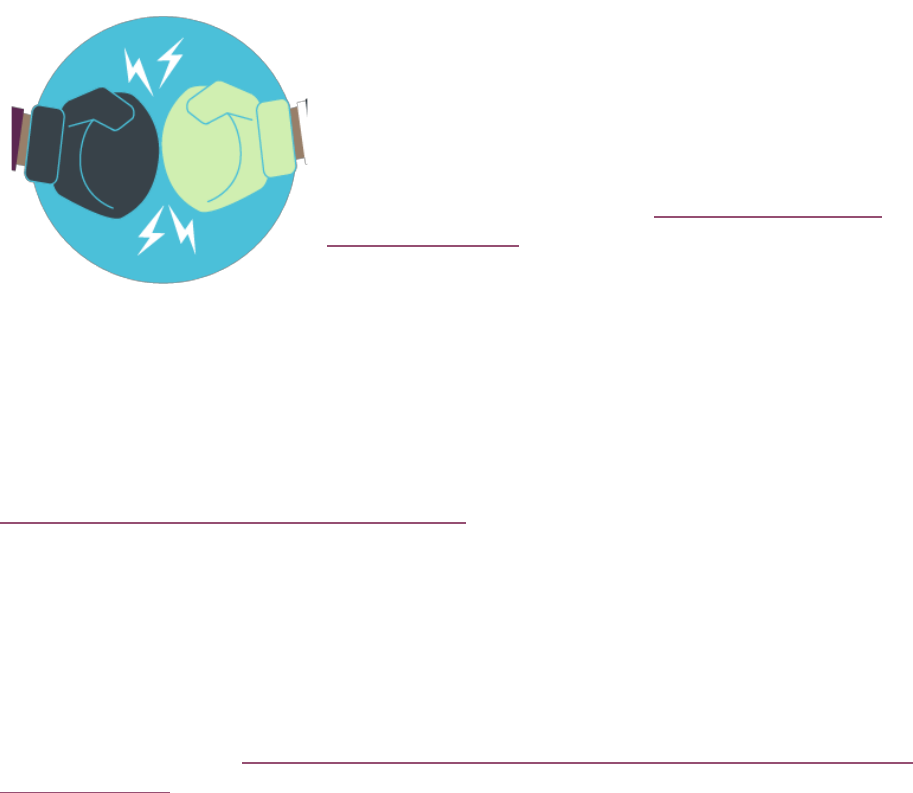
SAM Housing Plan Course | LWVT REVIEW | 5/31/22
30
Handling a Landlord Dispute
Unfortunately, disputes can arise between a landlord and tenant
over the rights and responsibilities of each party. Here are a few
guidelines to help:
1. Avoid disputes. Refer to your lease agreement to see what has
been agreed to in the first place. Also get to know your legal rights
at the federal, state and local levels. HUD offers state-by-state
assistance for renters.
2. Notify your landlord immediately if there is a problem. Don’t let
it fester.
3. Keep copies of all correspondence with your landlord regarding any issues that arise.
4. Mediate the problem. Mediation is a voluntary meeting between two parties with an impartial
third party who can find areas of agreement and help resolve differences. Often inexpensive
(compared to lawyers), the mediation agreements can sometimes help resolve issues without
courts and lawyers.
If the differences still cannot be resolved, you may need to pursue legal action in small claims court.
Violations of the Fair Housing Act can be filed online.
Fair Housing Act
The Fair Housing Act is a federal act that protects buyers and renters from discrimination. Under the Fair
Housing Act, a landlord or seller cannot discriminate against a renter or buyer based upon race, color,
nationality, religion, sex, disability or familial status (the number of children you have). Despite
continuing efforts to strengthen the act, there are continuing reports of discrimination.
If you feel you are discriminated against, you can file a complaint with the Office of Fair Housing and
Equal Opportunity (FHEO). Learn more at HUD about the basics and what to do if you think your rights
have been violated.

SAM Housing Plan Course | LWVT REVIEW | 5/31/22
31
Types of Lease Agreements
A lease is a legal agreement between you and a landlord. Leases
obligate you and your landlord to specific commitments. Some
landlords may require a co-signer to the lease if you are under a
certain age or do not have much credit history.
The most important obligation of your lease is the length of time
it is in effect. When you sign a lease, you agree to rent the
apartment for a specified period of time and your landlord agrees
to rent the property to you for that same amount of time.
Your lease obligation applies whether you live in the apartment
or not. If you choose to leave your rental unit before your lease is up, your landlord legally is entitled to
the rent you owe for the time remaining on your lease.
• Short-term lease: A short-term lease normally will state a fixed monthly rental rate for the entire
duration of the lease. If you know you are planning to stay in the apartment or house only for a
short time, it makes sense to get a short-term lease.
• Month-to-month lease: With a month-to-month lease, you agree to rent for a month at a time. Your
rental price is subject to change at any time (as long as your landlord provides the appropriate
notice to you as defined in your lease). If you are unsure about how long you will occupy the rental
unit, a month-to-month lease may be the best option for you.
• Subleasing: If you sublease (sometimes called sublet) an apartment or house, you are renting a
property under an original lease that someone else holds. You normally work out the arrangements
with the original tenant rather than the landlord. If you are going to sublease, be sure to obtain
written consent from the landlord allowing you to live in the apartment or house for the duration of
your agreement with the original leaseholder.
No matter the type of lease, be very sure that you understand and can meet the terms of your rental
agreement. If for some reason you want to end your lease early, carefully read your rental agreement to
understand any penalties for breaking the lease. You may owe a part or all of your remaining rent for
the year, owe a hefty fee or lose your security deposit.
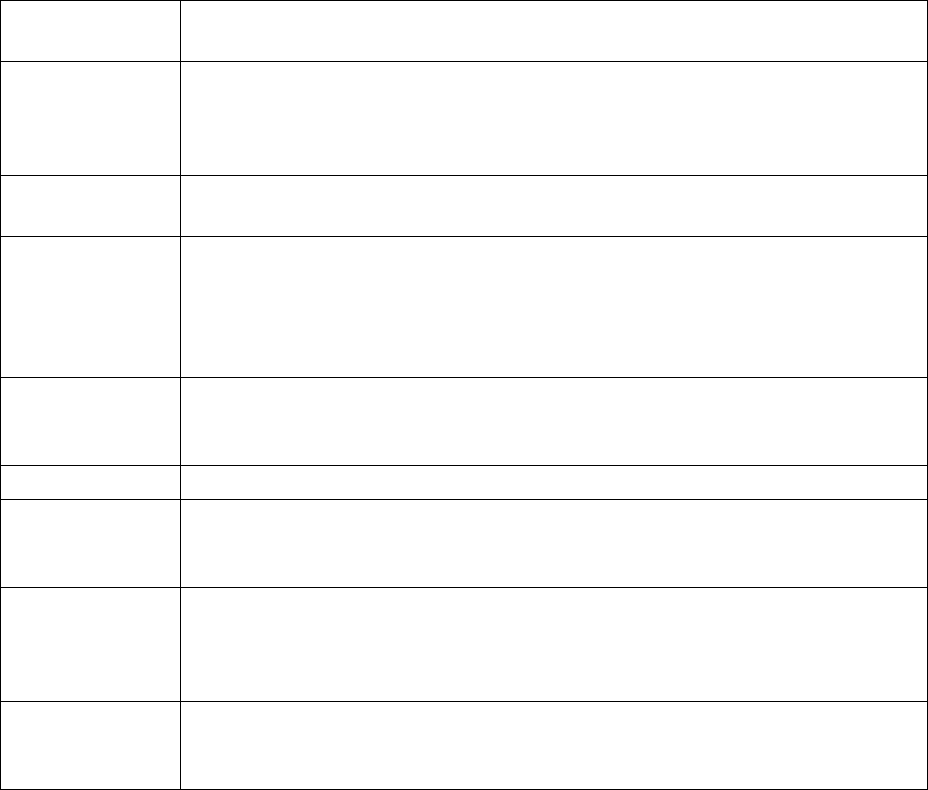
SAM Housing Plan Course | LWVT REVIEW | 5/31/22
32
Common Lease Terms
A lease is an agreement between you and the property owner. It is made in good faith, meaning that no
one intends on harming the other party. But the lease also is a contractual agreement. Before you jump
into any agreement, it’s important to take a close look at it and understand what you are signing.
Remember to carefully review the terms of the lease so you know what you are on the hook for
financially. You also will want to inventory the leased property before you move in by walking through
the property with the landlord to note any deficiencies prior to moving in. And, always get the
agreement or modifications to the agreement in writing.
Get to Know Lease Terms
If you are unsure of a term or clause in a lease, ask the landlord to define what it means. Don’t be afraid
to ask, and don’t let your landlord gloss over it. Don’t be embarrassed to take your time, call someone
for help or do an Internet search for words and phrases that you don’t understand. Among other items,
look for these common clauses in your lease agreement.
Term or Clause
Description
What’s Important
List of tenants
This is the complete list of all adults occupying the rented unit. It’s important to
the landlord, in particular, who can collect the full rent from any individual listed.
The landlord also can terminate the lease if one person listed violates a term of
the lease.
Rent due
This should be the exact amount due, when, grace periods (if any), how and
where payment should be made, and fees for late payments.
Time period
(term)
This is the number of months being rented. This should be very specific and
should outline what happens once this length of time passes. For example, does
a one-year lease become a month-to-month rental after a certain point? Does
the amount for the rental increase? The lease also should specify when the
terms can be changed.
Deposits and fees
It should be specified whether deposits are refundable or not, and under what
conditions. Your lease or rental agreement also should specify how the deposit
will be refunded and the time frame in which it will take place.
Utilities
This section should identify all utilities you will need to pay, outside of the rent.
Right to enter
the premises
This clause should specify exactly when and under what conditions the landlord
can enter the premises being rented. State laws regulate this, so get to know
what is permissible in your state.
Maintenance/
repairs
Get a detailed list of major repairs (that the landlord will be responsible to fix)
and minor repairs (that the renter will fix) and how/when to notify the landlord
that something needs maintenance or repair. Remember that each party has
certain responsibilities in this arrangement.
Occupancy rules
The lease probably will stipulate that only the adults on the agreement (and
their children) may occupy the premises. Also look for information regarding
pets, including types, numbers and additional fees for them.
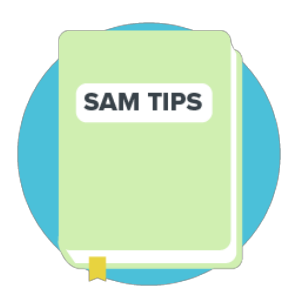
SAM Housing Plan Course | LWVT REVIEW | 5/31/22
33
Some agreements will list restrictions on disruptive or illegal behavior, information on subletting, what
common areas are available for use, parking arrangements, etc. Lease and rental agreements can vary
by state, so be sure you know what is applicable to your particular case.
And, ask what the landlord’s insurance covers in terms of property damage from unexpected events
such as fire or broken pipes.
Do an Internet search for sample leases to see what a typical lease
might look like.

SAM Housing Plan Course | LWVT REVIEW | 5/31/22
34
Walk Through Before You Sign
Before you actually sign a rental agreement, perform a walk-through. If the place you are renting is
occupied, ask if you can sign the lease once the premises are vacant. You don’t want to find out that
furniture or rugs are hiding unsightly or unclean areas of the rental.
Do your walk-through with the manager first, getting sign off on any problems you find. Document
damages with time- and date-stamped pictures with a cellphone. Most reputable landlords will have a
checklist to fill out before move-in and at move-out.
Courtney’s Story
When Courtney went looking for her first apartment in her hometown of
Tucson, Ariz., one offer was too good to pass up. It was close to work and the
first month was free. She signed a one-year lease and moved in. The carpet
was a wreck — worn thin and coming up in places, but the move-in flier
promised new carpet as needed, and the property manager agreed that hers
qualified.
When Courtney asked about the carpet after moving in, she found out that
the original manager had been let go, the fliers were gone, and there was nothing in the lease about
new carpet.
Courtney soon discovered the problem was worse than she thought.
“I saw this giant roach crawl out from under the carpet where it was coming away from the walls,” she
says, “and when I lifted it up, there were dead roaches and roach skins everywhere.”
After weeks of trying to get the carpet replaced and the apartment sprayed for bugs, Courtney decided
that she had to move out. She broke her lease and found herself on the hook for almost $1,500,
including paying for that “first month free” that she was promised when she moved in.
Looking back, she says she never would have rented that apartment with the carpet as it was, but the
manager had made her a verbal promise. Not getting that part of the agreement in writing turned out to
be an expensive lesson in things to consider before signing a legal contract.

SAM Housing Plan Course | LWVT REVIEW | 5/31/22
35
Security Deposits
Your security deposit likely will be the equivalent of one or two
month’s rent, paid up front. But getting that money back can be
troublesome. Here are some ways to make sure you get your deposit
back when you decide to move:
• Unless you are renting from a private owner, make your check out to a company rather than an
individual.
• Do some research in your state to find out what’s refundable and the rules regarding filing dispute
claims if your landlord refuses to refund your security deposit. In some cases, the landlord may have
to go to court to keep your money.
• Know what qualifies as vacating your residence and get proof when you turn in the keys.
• Refer back to pictures that you took when you moved in to show proof of pre-existing damages.
• Take pictures of the unit as you are leaving it to substantiate your claim.
If all else fails, you can have an attorney issue a demand letter or send one yourself using any one of
several online services. Small claims court also is an inexpensive way to recoup your deposit money.

SAM Housing Plan Course | LWVT REVIEW | 5/31/22
36
Maintenance and Repairs
As you would expect, your home will require maintenance and repairs. A
great thing about renting is someone else is responsible for the upkeep
of the building and the property. But not all services in your rental unit
are free — it’s important to know just who pays, for what, and when.
• Major issues are the kind that would prevent you from living
safely in the rental unit. Most often these issues are the landlord’s responsibility. Remember, the
landlord is responsible for providing a safe and habitable place.
• Minor issues, such as a blown lightbulb or furnace filter, can be your responsibility. Defects, like
worn carpet or a stained toilet, are minor because it doesn’t make your rental uninhabitable.
• Maintenance issues, like lawn mowing, snow clearing or trash pickup, may not be free.
Before you sign a rental agreement, get in writing those expenses that are factored into the cost of your
rent and those that are extra.
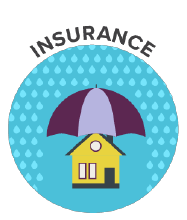
SAM Housing Plan Course | LWVT REVIEW | 5/31/22
37
Renters Insurance
Renters insurance covers your personal property and protects you from liability claims. It may not be
required by your landlord, but it is an important and relatively inexpensive way to protect your
possessions, including furniture and electronics, from theft, fire, storms and other damage.
You may be able to get a basic policy for as little as $12 a month. But to make sure you have enough
protection, it is important to inventory your belongings.
Dig deeper with SAM’s Insurance Course
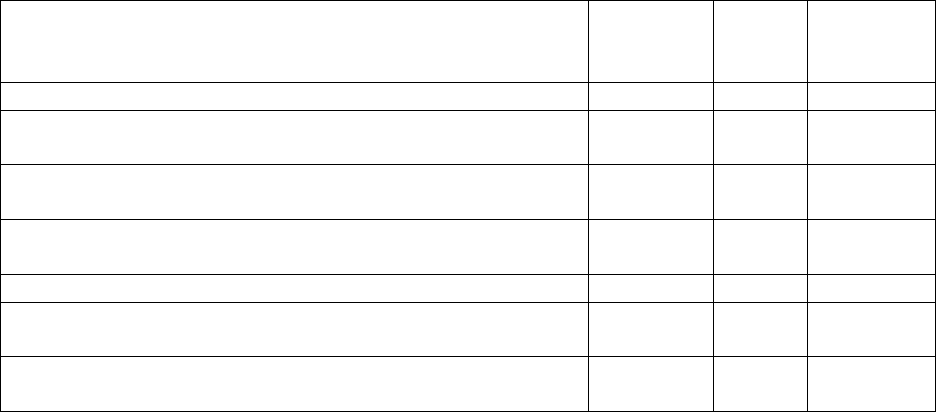
SAM Housing Plan Course | LWVT REVIEW | 5/31/22
38
Check Your Knowledge
Before you sign your next rental lease, rate your readiness:
Topic
Absolutely!
Not
really
Oh, I didn’t
think about
that …
I know the required move-in costs and I’m ready for them.
I’ve studied the lease and I know what I will need to pay if I
have to get out of the lease early.
I know what my security deposit is and what I have to do to get
it back.
I have crunched the numbers and I know what I need to pay
monthly for rent, utilities and other living expenses.
I know what my lease says about having pets and roommates.
I know what fees I will be charged for maintenance items and
trash pickup.
My renters insurance is selected and it will protect my
possessions from fire, theft or other damage in the rental unit.
If you answer “not really” or “didn’t think about it” on one or more topics, you still have some
homework to do. Review the areas of this course related to those topics to ensure you have a complete
understanding before moving.
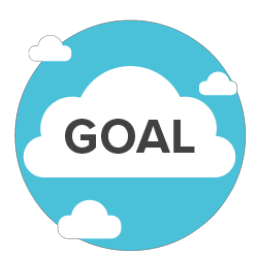
SAM Housing Plan Course | LWVT REVIEW | 5/31/22
39
Set Your Renting Guidelines
To aid with your decision making, it’s a good idea to create a checklist
when comparing your housing choices.
Before you can create your checklist, however, it helps to have some
general guidelines to use. Use these sentence starters to help you think
about things you want to maintain from your current living situation,
improve on or change:
• In my current housing situation, I like ________________, and I want my new place to have that
as well.
Example: In my current housing situation, I like that there are two bedrooms, and I want my new
place to have that as well.
Example: In my current housing situation, I like that I am downtown, and I want my new place to
have that as well.
• Something I would like to improve from my current living situation is to have
_____________________ instead of ________________________.
Example: Something I would like to improve from my current living situation is to have the ability to
take public transportation instead of needing to drive every day.
• One thing I would change from my current housing situation is
_______________________________________.
Example: One thing I would change from my current housing situation is to have a yard so I can get
a dog.

SAM Housing Plan Course | LWVT REVIEW | 5/31/22
40
How to DECIDE
When making a decision to move, no matter if it’s for a new job, a change in marital status, retirement
or just for the sake of change, you will want to check out several options and choose the one(s) that fit
your lifestyle, values and life circumstances. But first you need to create an inventory of just what
criteria are important to you and the priority they take.
1. Define your goal. What do you want to achieve by renting your next place? Do you want to save
up to buy one day or are you looking to downsize?
2. Establish your housing criteria. Which features are wants and which are needs?
3. Choose two to three good options. It’s elimination time. Remove any options without your
must-have features to get your list down to two or three options.
4. Identify the pros and cons. Make a chart so you can quickly compare the features and prices of
each of your top two or three choices.
5. Decide what’s best. Choose the rental property that best matches your criteria.
6. Evaluate your decision. Did you stay within budget? Do you feel good about your choice? Set a
plan for how long you will live in your new place and start saving for your next move.

SAM Housing Plan Course | LWVT REVIEW | 5/31/22
41
MAKE YOUR HOUSING PLAN: I WANT TO OWN
Why Buy?
Many financial professionals consider homeownership to be the
single best avenue for building wealth. There are tax benefits as
well. Under current U.S. tax law, you can write off your mortgage
interest expense and property taxes against your income on your
primary residence if you are eligible to itemize deductions
(consult your tax advisor for details).
Owning a home can foster a sense of pride and security, knowing
that any improvements you make to the property will benefit you
rather than your landlord. Homeowners tend to have more
freedoms in a property that isn’t controlled by the rules of
others, and many people want to know that they are getting more in return for their money than just a
place to lay their head at night.
Do You Itemize?
Only 1 in 3 taxpayers itemizes deductions on their annual tax return. If
you don’t itemize deductions, you could be losing out on important
financial benefits. Check out this map to see how your county ranks
nationally in claiming tax deductions.
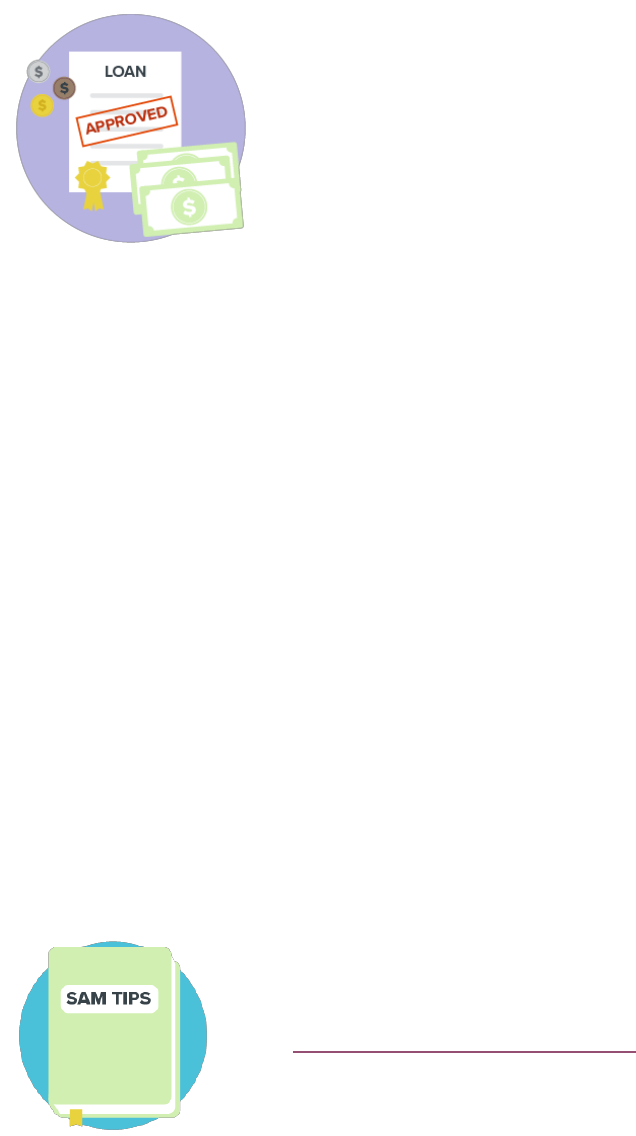
SAM Housing Plan Course | LWVT REVIEW | 5/31/22
42
The Costs of Getting a Mortgage
Lenders are in a business to lend you money, but they don’t do it for
free. When you decide to buy a home and get a new mortgage, you can
expect to pay fees and other costs associated with getting the loan and
closing the sale.
Typical fees and closing costs associated with mortgages include:
• Lender Fees – These are fees charged for processing the loan. There may be fees for application,
loan origination, credit reports, etc. These fees often can be negotiated, so it pays to shop
around.
• Discount Points are a type of fee that is paid at the time of the loan closing, usually 1 percent of
the loan amount. Points are charged upfront to get a lower interest rate over the life of the
loan.
• Fees Charged by Other Parties – These often include fees for searching the property’s title (to
make sure it’s clear to be sold) and appraising the property (to make sure it’s worth what you’re
paying). Others can include survey fees, attorney fees, closing fees, courier fees, home
inspection fees and title filing fees.
• Prepaid Items – These amounts typically pay your interest and taxes; these funds typically are
placed in an escrow account. Essentially, you are prepaying your interest to the lender since you
are living in the home until your first payment comes due. Likewise, you are paying property
taxes into an escrow account that will be paid to the state at the end of the year.
It’s important to review all fees before accepting the loan (and before closing).
• Never sign a document that has blanks to be filled in later.
• Don’t sign a document that has terminology you don’t understand.
• Only you can make the determination as to whether a loan is good for you.
New mortgage process regulations went into effect in October 2015. If it’s
been a while since you bought a home, see how these regulations help you
at the Consumer Financial Protection Bureau website.

SAM Housing Plan Course | LWVT REVIEW | 5/31/22
43
How Mortgages Work
When you apply for a mortgage, you quickly become immersed in a new
language. It can all sound very foreign at first, but we’ll boil down some
basics here about how mortgages work and language that is commonly
used.
First, let’s look at what you really are paying when you make a mortgage
payment. These components commonly are referred to as PITI:
• Principal – This is the amount of the monthly payment that pays off your actual loan amount.
• Interest – This is what you are paying to borrow the money for your home. It is calculated based
on the interest rate, how much principal is outstanding and the time period during which you
are paying it back. At the beginning of the loan repayment period, most of your payment
actually is going toward interest, with a small portion going against paying down the principal.
Over time this will reverse and more of your payment will go toward reducing the loan balance.
• Taxes – Most homeowners will pay their annual property taxes in periodic increments to the
lender (e.g., quarterly).
• Insurance – Lenders will require homeowners insurance, so some of your monthly payment will
be allocated to your insurance. You sometimes will also have to pay a mortgage insurance
premium.
What’s Escrow?
Taxes and insurance are held in escrow on your behalf. This means the
lender collects these amounts for you and pays them when the bills are due.
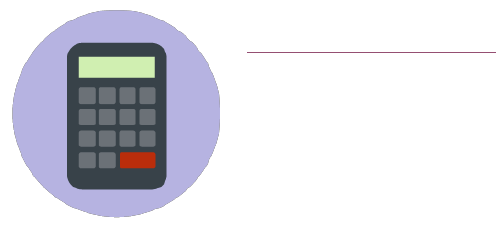
SAM Housing Plan Course | LWVT REVIEW | 5/31/22
44
Sample Amortization Tables
U.S.MortgageCalculator.org offers an easy way to see how mortgage
payments get applied to the components just described. You can use this
calculator (also available as an Android app) to plug in numbers for your
own mortgage.
Repayment Shock!
Plug your own numbers in the amortization calculator and scroll down to see how much you actually will
pay over the life of your loan.
Did the number shock you? Yes No
When it comes to reducing how much you pay over the life of your loan, make simple reductions in your
outstanding principal. Try it with the calculator to see how just adding $20 a month can reduce the
overall cost of your loan repayment.
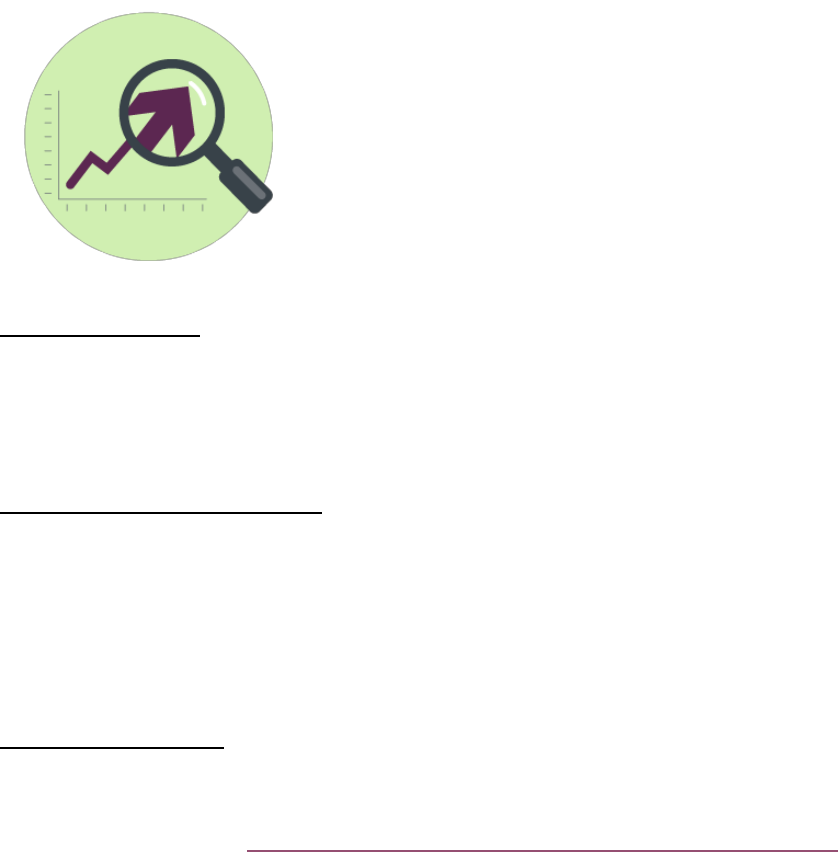
SAM Housing Plan Course | LWVT REVIEW | 5/31/22
45
Fixed-Rate and Adjustable-Rate Mortgages
To make good financial decisions, you need to understand the types of
mortgage products on the market. Though there is quite a variety,
most are either fixed-rate or adjustable-rate mortgages. Loan terms
can also vary, so it’s important to understand how it impacts what you
pay and when. Think about what you can afford now, but also look
toward the future.
Fixed-Rate Mortgages
These loans commonly are used because they give homeowners a fixed interest rate over the life (also
known as the “term” or time period) of the loan. They often are packaged as 15-year or 30-year terms.
Your monthly payments for principal and interest do not change, although payments for insurance and
taxes can change.
Adjustable-Rate Mortgages (ARMs)
ARMs are popular because they initially offer a lower interest rate. Over time, the interest rate
fluctuates based on an index with which it is associated (like the U.S. Treasury bill rate). Homeowners
need to be particularly aware of how much the rate is allowed to fluctuate, over what period of time,
and what caps may exist. Unfortunately, too many buyers do not contemplate what changes in jobs,
health, the economy or personal financial situations could mean when they initially sign on with an
ARM.
Interest-Only Mortgages
These types of mortgages allow you to make interest-only payments (no principal reduction) for a set
time period at the beginning of the loan. These types of loans can be very risky, however, especially if
the housing market falters. Read more from the Federal Deposit Insurance Corporation (FDIC).

SAM Housing Plan Course | LWVT REVIEW | 5/31/22
46
Check Your Knowledge
Check your understanding of the language common to the mortgage lending industry.
Principal
The actual loan amount
Interest
What you are paying to borrow money for your home purchase
Taxes
An annual property tax amount paid to the county/city where a house is
located and often paid to a lender to be held in escrow
Homeowners Insurance
Held in escrow, the amount paid monthly as part of a mortgage payment
for homeowners insurance
Fixed-Rate Mortgage
Usually a 15- or 30-year term loan with a known interest rate
Adjustable-Rate
Mortgage
A mortgage where the interest rate is tied to an index, like U.S. Treasury
bills
Term
The period over which a loan is repaid

SAM Housing Plan Course | LWVT REVIEW | 5/31/22
47
What to Look for in a Lender
Early in the process of looking for a home, you will want to find a lender
you can trust. Getting preapproved for a loan will make your bid to buy a
home much more attractive.
A trustworthy lender also can help you:
• Determine how much you are qualified to borrow (remember, this is probably above what you
actually will want to borrow).
• Identify the right kind of mortgage for you, your lifestyle and your income projections.
• Determine if you need to improve your credit profile or if you have items in your credit report
that hurt your overall score.
And, just like comparison shopping for a major appliance or car, you will want to compare lenders. Some
have products and rates that can be more advantageous to your needs.
Ask for Credentials
Not all lenders are the same. Make sure your mortgage lender is licensed and
registered at the state or federal level. Ask for credentials related to training
and licensing.

SAM Housing Plan Course | LWVT REVIEW | 5/31/22
48
Important Lender Forms
As of October 3, 2015, your lender is required to give you certain forms and disclosures within stated
timelines that will make it easier for you to understand your loan, its terms and what it will cost you.
• Loan Estimate (LE) – You must be given the LE within three business days of your application. It
will help you shop around to compare loan offers. The Consumer Financial Protection Bureau
(CFPB) has a sample LE available with terms defined.
• Closing Disclosure (CD) – Once you’ve selected your lender and made plans for closing, the CD is
a form that gives you the final costs associated with your loan. Use it to compare against the LE
and understand reasons why these two documents might be different. It must be in your hands
no later than three days before your closing date. The Consumer Financial Protection Bureau
(CFPB) has a sample CD available with terms defined.

SAM Housing Plan Course | LWVT REVIEW | 5/31/22
49
Special Lending Programs
Owning a home is called the American Dream, but not everyone qualifies for a conventional fixed-rate
loan.
Many first-time homebuyers may not know they are eligible for government assistance programs
backed by the Federal Housing Administration (FHA). Here is a sample of some loans for which you may
qualify.
Loan Type
Pros and Cons
Who Qualifies
Federal Housing
Administration
(FHA) Mortgage
• Pro: Low down payments; as low
as 3.5 percent of the purchase
price
• Pro: Flexible standards for credit
qualification
• Con: A monthly private mortgage
insurance premium is charged to
protect the lender in case of
default on the loan
• Mostly first-time home
buyers
• Could be for refinancing if
little equity has been built
Veterans Affairs
(VA) Loans
• Pro: No down payment
• Pro: No private mortgage
insurance premium
• Pro: Easier than conventional loans
to qualify with lower credit rating
• Con: There are limits on what can
be borrowed
• Most active-duty military and
veterans
• Reservists or National Guard
with more than six years of
service
• Spouses of service members
who died in line of duty or as
a result of service-connected
disability
United States
Department of
Agriculture
(USDA) Housing
Assistance
• Pro: Offers qualification to
individuals who show a willingness
and ability to repay
• Pro: Low interest rates
• Pro: No down payment
• Con: Limitations on income
eligibility and location
• Varies, but most participants
must qualify based on
income levels and be in a
designated rural area
• Also available for elderly,
disabled or rural residents in
multi-unit housing
Read more about the various loans at USA.gov, U.S. Department of Veterans
Affairs, and U.S. Department of Agriculture. You also can find more information
about other federal, state and local programs at HUD.gov.
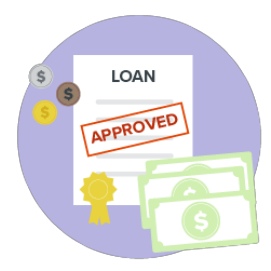
SAM Housing Plan Course | LWVT REVIEW | 5/31/22
50
Lenders to Watch Out For
When it comes to making a big decision to buy a home, you need to be
careful about your selection of a lender. Regulations have been
implemented by the Consumer Financial Protection Bureau to help
protect borrowers. The following tips also are helpful to keep in mind.
• Get objective advice. Mortgage lenders are in the business to make money, not to be your
friend. Talk to several lenders before making a decision to go with one. Consult others who can
help you such as friends, family or financial planners to make this decision.
• If it sounds too good to be true, it probably is. If a lender offers up a mortgage that is “just
right for you,” it may turn out to be just right for the lender.
• Read before you sign. Understand the terms of the mortgage, when you have to make
payments, fees and costs associated with taking the loan, etc.
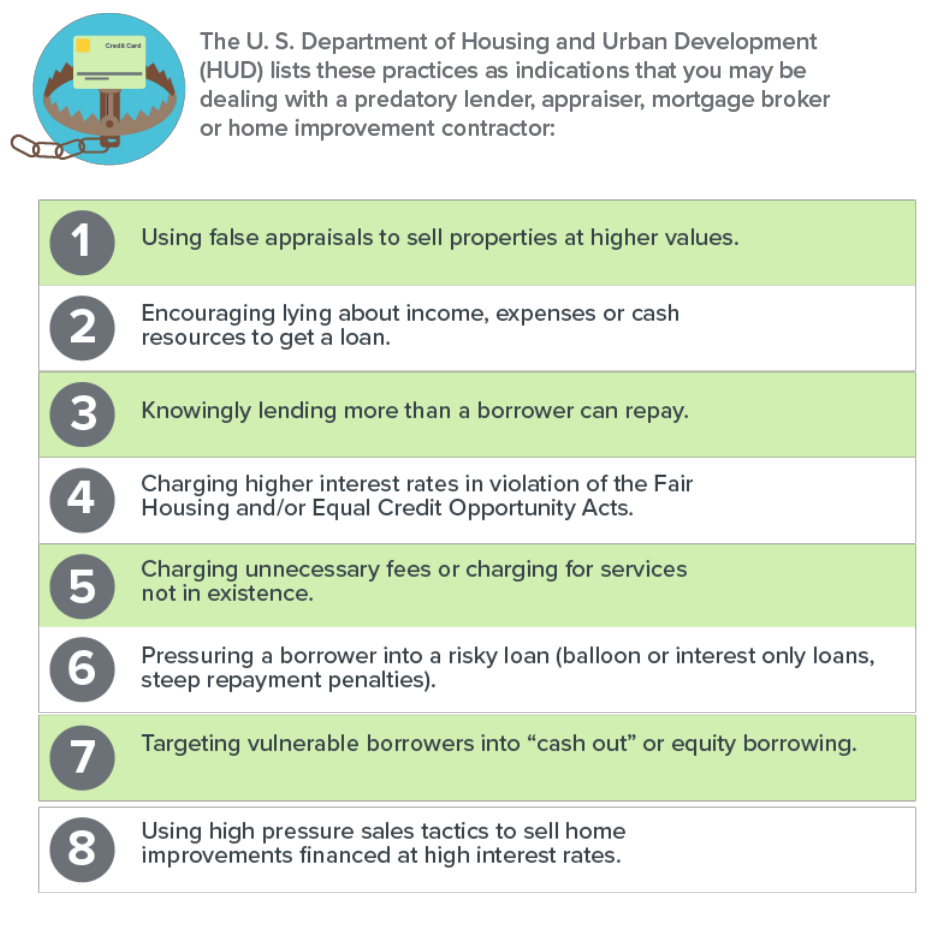
SAM Housing Plan Course | LWVT REVIEW | 5/31/22
51

SAM Housing Plan Course | LWVT REVIEW | 5/31/22
52
Check Your Knowledge
Can you identify warning signs of an unscrupulous lender? Read the statement of practice and check off
the correct column.
Statement of Practice
Probably
Trustworthy
Run Away!
Overstates your income on a loan application1
Provides you with state credentials and certifications
Has you leave a signature line blank
Gives you a Truth in Lending pamphlet
Asks for verification of your stated income
Changes information you provided on the application
Has you paying interest daily if your loan payment is late
Puts you into a loan where the payment is due in full at the end
of a short period of time
Says there is a prepayment penalty if you pay off the loan
within five years
Presents more paperwork to be signed late in the process
Answers: Probably Trustworthy: #2; #4; #5; Run Away!: #1; #3; #6-#10

SAM Housing Plan Course | LWVT REVIEW | 5/31/22
53
Homeowners Insurance
Homeowners insurance covers your home’s physical
structure, other buildings on your property (e.g., a
detached garage or shed), and personal items for
damages caused by natural disasters and protects you
against accidents and injuries caused to visitors on your
property.
Mortgage lenders require that you carry insurance for the
length of your mortgage.
As a guide, make sure you have enough coverage for the
two main categories in a homeowners’ policy: your home
and your belongings. This should be in the form of
replacement coverage; that is, what it costs to replace
your home and belongings using current pricing and comparable materials.
You also will want to buy coverage in case you need to live elsewhere while repairs are done, and
liability coverage in case others get injured on your property.
Most standard policies offer from $100,000 to $300,000 in liability insurance. You may want to consider
an umbrella liability policy of up to $1 million or even $5 million and extra life insurance to make sure
there will be enough money to pay off the mortgage.
A property and casualty insurance agent can assist you with these decisions.
Dig deeper with SAM’s Insurance Course

SAM Housing Plan Course | LWVT REVIEW | 5/31/22
54
Homeowners Associations and CC&Rs
Many newer communities, no matter the type of home, are governed
by homeowners associations (HOAs). The primary purpose of an HOA
is to maintain property values using covenants, conditions and
restrictions (CC&Rs).
HOA board members are from the community, and they volunteer
their services to help administer the functions of the HOA. The HOA
follows bylaws stating such things as when they meet, the duties of
the members and what voting rights HOA members (homeowners)
have.
CC&Rs are the rules the HOA board enforces to help maintain property values. These rules can restrict
things such as play equipment, fencing, garbage pickup, paint color choices, exterior home decorations,
the use of outdoor clothes lines to hang laundry and roofing materials.
Because there can be hefty fines for the violating the CC&Rs, it’s important to understand and read the
CC&Rs before buying into a neighborhood.

SAM Housing Plan Course | LWVT REVIEW | 5/31/22
55
Managing Your Mortgage
When you own your home, you have choices about how to manage
this important asset. Some potential choices you might face as a
mortgage holder include:
Refinancing Your Mortgage
Refinancing your mortgage makes sense when interest rates fall or
if you need a more affordable monthly payment. But there are
scammers out there who will take advantage of your need.
Watch for:
• Solicitations with “limited time” offers.
• Advertisements that falsely claim to be government-sponsored.
• Online sites that request your personal information or upfront fees.
Prepaying Your Mortgage
When you can afford to do it, making an extra payment to the principal on your mortgage can help. Even
a small amount like $25 extra each month can save you thousands of dollars in interest payments over
the life of the loan. But keep in mind that prepaying may not benefit you if you have a low interest rate
but are in a high income bracket since you lose the tax deductions on the interest you pay. In addition,
consider the next best use for the money used to make principal prepayments. Perhaps it can be
invested to earn a higher return than the interest rate on your mortgage,
HUD.gov offers several programs and resources for helping you find ways to
refinance your home. Also make sure you know what your loan states with
respect to prepayment penalties.
Taking Out Home Equity Credit Lines
Sometimes an upgrade or repair to your home may require that you take out a home equity line of
credit (HELOC). This kind of borrowing is secured by the equity in your home, so it is wise to consider
these cautions:
1. If there is a housing market slump, you could end up owing more on your mortgage and HELOC
than your property is worth.
2. Do not take a HELOC to pay off credit card debt. If you find yourself in this situation, it would be
wise to speak with a reputable credit counselor who can help you work out payment terms with
your creditors rather than risk your home.
3. If you fail to make your HELOC payments, you risk losing your home.

SAM Housing Plan Course | LWVT REVIEW | 5/31/22
56
Mortgage Foreclosure
If you are unable to make your mortgage payment, you
need to speak to your lender or the company that services
your loan right away. The lender does not want to foreclose
on your home if it can be avoided, but you will need to
show that you are doing everything you can to pay your
bills.
• Check out assistance through local and state sponsored
programs. But be aware that there are many scams out
there.
• Contact your lender to work through alternative
payment arrangements or loan workouts. Have your
budget and documentation ready to show your lender.
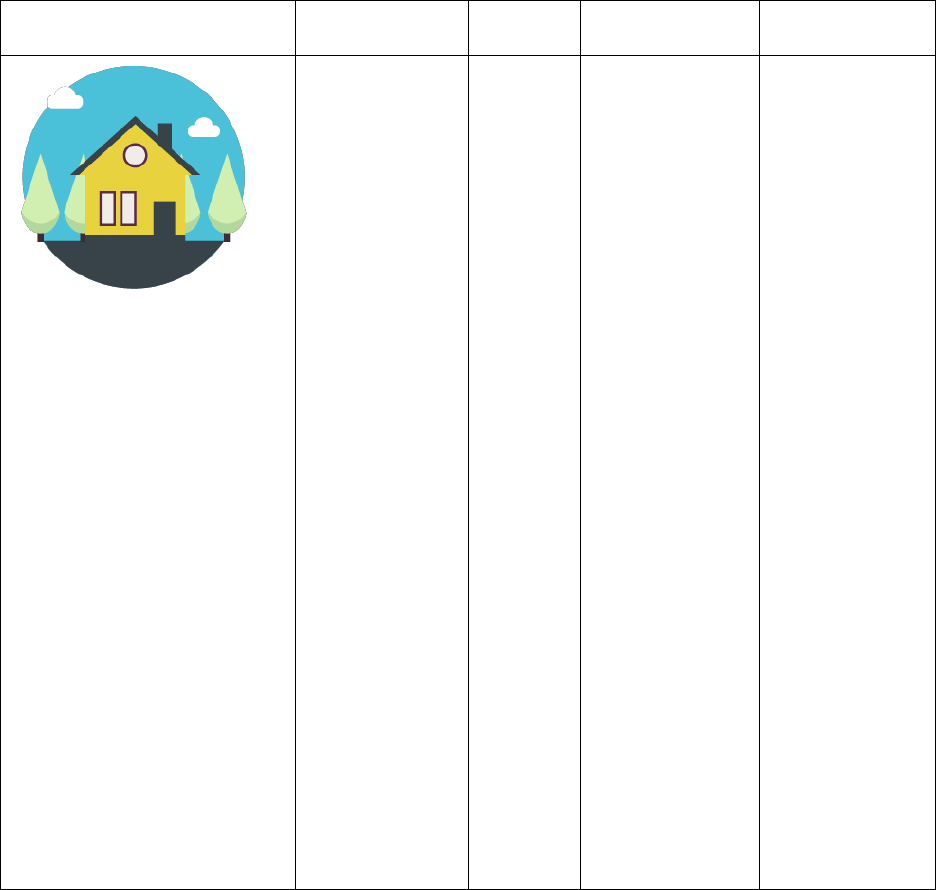
SAM Housing Plan Course | LWVT REVIEW | 5/31/22
57
Make Your Housing Plan [Own]
Essentially, homeownership is about responsibility. When you own a home, you are responsible for the
upkeep, homeowners insurance, property taxes, utility payments — and most importantly — the
mortgage. Your responsibilities can vary, however, based on the type of home you purchase.
Types of Homes
A home is a major purchase, no matter what its floor plan or style. With the challenges presented in the
current home market, it’s wise to look for homes in different sizes and types, including nontraditional
homes.
Home Type
Descripti
on
Advantages
Disadvantages
Single-family
home
This is
probably
what
most
people
consider
when
they
think of
houses. It
is a free-
standing
residence
, usually
occupied
by one
family.
• Resale values
typically are
higher than
other
housing
types.
• Outside
spaces
belong to
you,
providing
room to
grow a
garden or
enjoy
outdoor
hobbies.
• The freedom
to do as you
please,
unless there
is a
homeowners
association.
• Privacy.
• Recreational
amenities
may be part
of a planned
homeowner
s
association,
but are not
typically part
of an
individual
homeowner’
s property.
• All property
taxes,
insurance
and costs
related to
maintenance
and repair
belong to
the
homeowner.
• Some
communities
are part of a
homeowner
s’
association,
so CC&Rs
may apply.

SAM Housing Plan Course | LWVT REVIEW | 5/31/22
58
Townhome
Townho
mes are
usually
multi-
level
units,
attached
by walls
to other
units.
Each has
its own
door to
the
outside.
• Low
maintenance
on common
property if
an
association
takes care of
it.
• Property
values can be
kept higher
because the
association
ensures.
upkeep and
uniformity.
• Prices tend
to be lower
than single-
family
homes.
• Proximity to
neighbors.
• Shared
walls.
• CC&Rs
enforced to
protect,
maintain
and enhance
property
values) can
be
restrictive.
• Violating
association
CC&Rs can
be costly.
Condominium or
Coop
Condos
(and
coops)
are
similar to
apartmen
ts, except
that each
unit is
individual
ly owned
rather
than
rented.
• You own the
space within
the walls,
which can
lower
insurance
needs
compared to
a single-
family home.
• Low
maintenance
on
communal
property
since it is
done by an
association
manager.
• Can be
cheaper to
own than a
single-family
home, but
still provide a
sense of
ownership.
• The CC&Rs
can be
restrictive.
• Violating
association
CC&Rs can
be costly.
• Annual fees
can increase
based on
majority
vote.
• Special fees
or
assessments
can be
levied.
• Privacy.
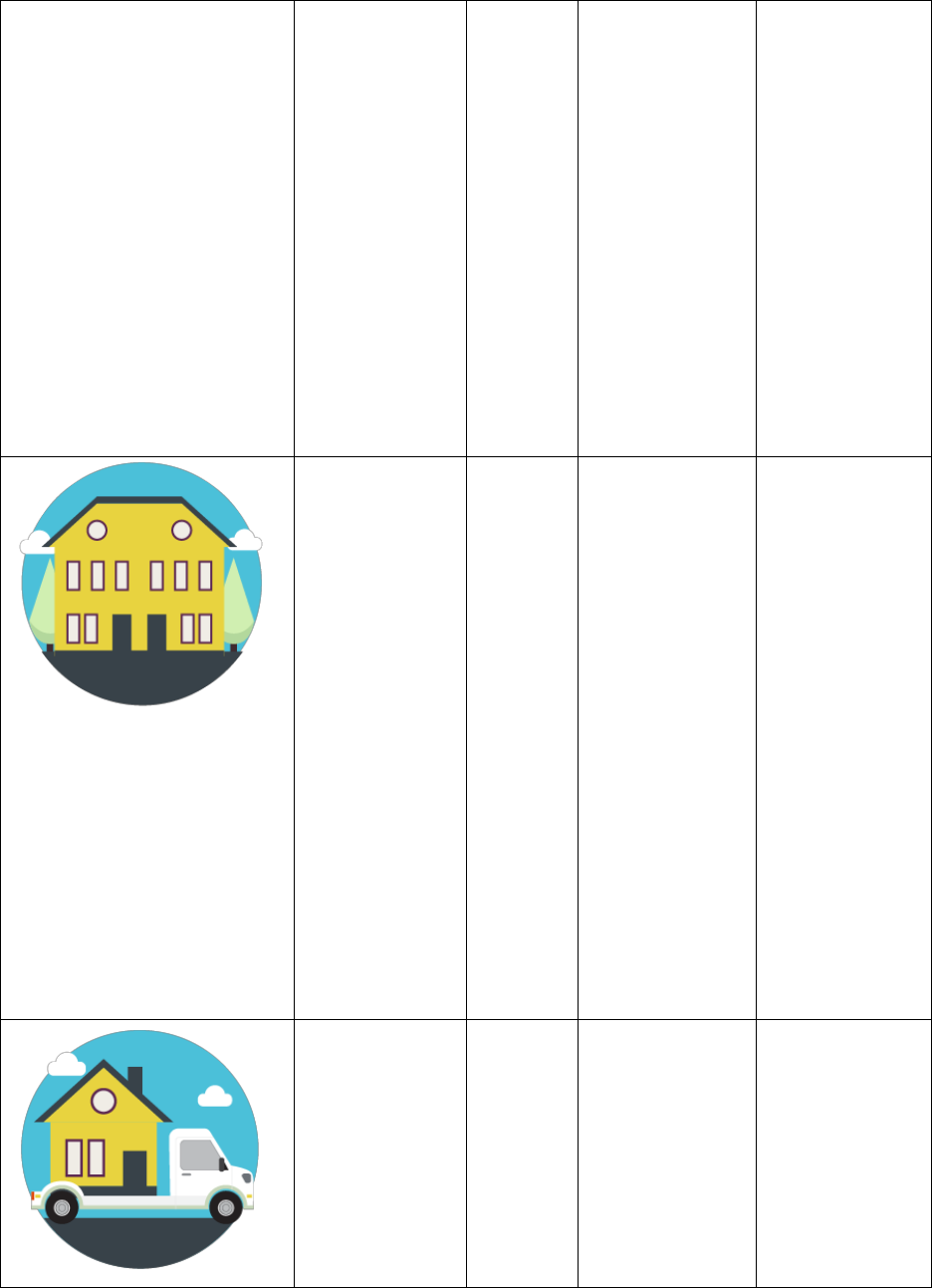
SAM Housing Plan Course | LWVT REVIEW | 5/31/22
59
• Allows for
ownership in
areas where
property
values for
single-family
homes are
particularly
high.
• Security may
be enhanced,
as well as
amenities
like pools,
tennis
courts, gyms,
etc.
Patio home or
duplex
This type
of
housing
only
comes in
pairs.
Dependin
g on the
region,
they are
also
called
patio
homes or
duplexes.
Each unit
is
occupied
by a
single
family.
• From a
buying
perspective,
usually
lower-priced
than a similar
detached
single-family
home.
• If part of an
association,
some
maintenance
(lawn, snow
removal,
painting,
etc.) may be
responsibility
of
association.
• Privacy from
neighbors.
• Smaller
yards.
• If an
association
exists,
CC&Rs can
be
restrictive.
Manufactured
home
These
single-
family
homes
can be
prefabric
ated and
transport
ed to the
site for
• The cost to
construct the
home is
generally
lower than a
single-family
home.
• Energy
efficiencies
can be
• Purchasing
the site and
making
improvemen
ts to it for
the home is
an additional
cost.
• Can’t be
customized

SAM Housing Plan Course | LWVT REVIEW | 5/31/22
60
the home
or built
on-site.
Although
they can
be
moved,
most are
situated
on a
permane
nt site.
achieved in
newer
manufacture
d homes.
• Some newer
communities
offer gated
entry with
associations
that take
care of
maintaining
common
areas.
with respect
to floor
plans or
blueprints.
• Quality of
materials
used in
building may
be less than
other types
of homes.
• Long-term
value
generally
does not
increase as
much as
other types
of homes.
SAM Housing Plan Course | LWVT REVIEW | 5/31/22
61
What Kind of Home Do You Want?
To begin thinking about a home choice, narrow your focus down to the type of home you want to
purchase. Take this quiz to help you.
Choices for each are 1-5 scale: 1 = yes, 3 = maybe, 5 = no
1. Rank your choices for each type of home:
Detached single-family home
Townhome
Condo or co-op
Patio home or duplex
Manufactured home
2. Identify your preference for living in a community with a homeowners’ association:
Absolutely! Depends on the CC&Rs No way, my home is my castle
3. Identify your need for privacy:
Very private Somewhat private Who needs it?
4. Rank your preference for performing routine maintenance and repair:
I do it all myself I can do some things I want someone else to be responsible
5. Identify your preference for recreational facilities:
I have no need for these I would like some recreational facilities I want many
recreational facilities
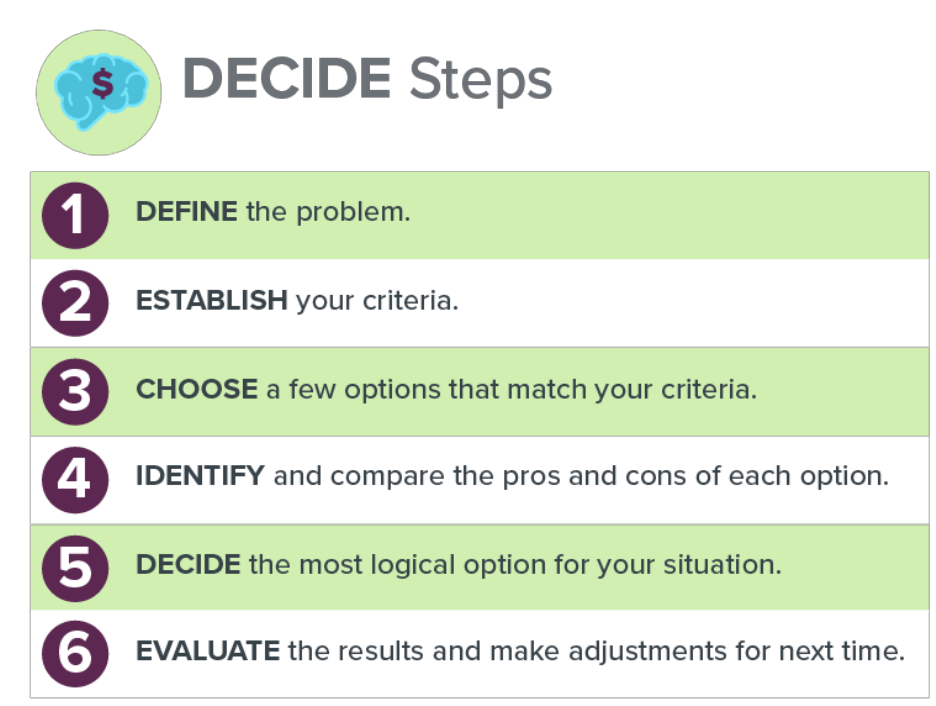
SAM Housing Plan Course | LWVT REVIEW | 5/31/22
62
How to DECIDE
When making a decision to move, no matter whether it’s for a new job, a change in marital status,
retirement or just for the sake of change, you will want to check out several options and choose the
one(s) that fit your lifestyle, values and life circumstances. But first you need to create an inventory of
just what criteria are important to you and the priority they take.
1. Define your goal. What do you want to achieve by purchasing this home?
2. Establish your housing criteria. Which features are wants and which are needs?
3. Choose two to three good options. It’s elimination time. Remove any options without your
must-have features to get your list down to two or three options.
4. Identify the pros and cons. Make a chart so you can quickly compare the features and prices of
each of your top two or three choices.
5. Decide what’s best. Choose the home that best matches your criteria.
6. Evaluate your decision. Did you stay within budget? Do you feel good about your home? Set a
plan for how long you will live in your new place and start saving for your next move.
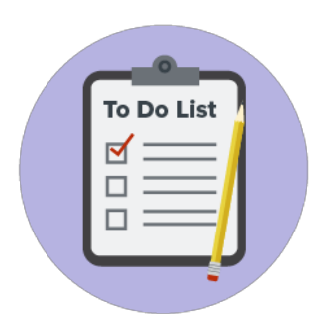
SAM Housing Plan Course | LWVT REVIEW | 5/31/22
63
Create Your Checklist
It doesn’t matter why you’re looking for a new place to live –
your first place, retirement, expanding family, downsizing, a new
job, divorce or just a fresh start – you’ll want to look at a lot of
different factors that make it your ideal place. You also will need
to decide which ones take top priority in making your decision.
Set Some General Guidelines
To aid your decision making, create a checklist when comparing your housing choices. Before you can
create your checklist, however, it helps to have some general guidelines to use. Use these sentence
starters to help you think about things you want to maintain from your current living situation, improve
on or change:
• In my current housing situation, I like ________________, and I want my new place to have that
as well.
Example: In my current housing situation, I like that there are two bedrooms, and I want my new
place to have that as well.
Example: In my current housing situation, I like that I am downtown, and I want my new place to
have that as well.
• Something I would like to improve from my current living situation is to have
_____________________ instead of ________________________.
Example: Something I would like to improve from my current living situation is to have the ability to
take public transportation instead of needing to drive every day.
• One thing I would change from my current housing situation is
_______________________________________.
Example: One thing I would change from my current housing situation is to have a yard so I can get
a dog.
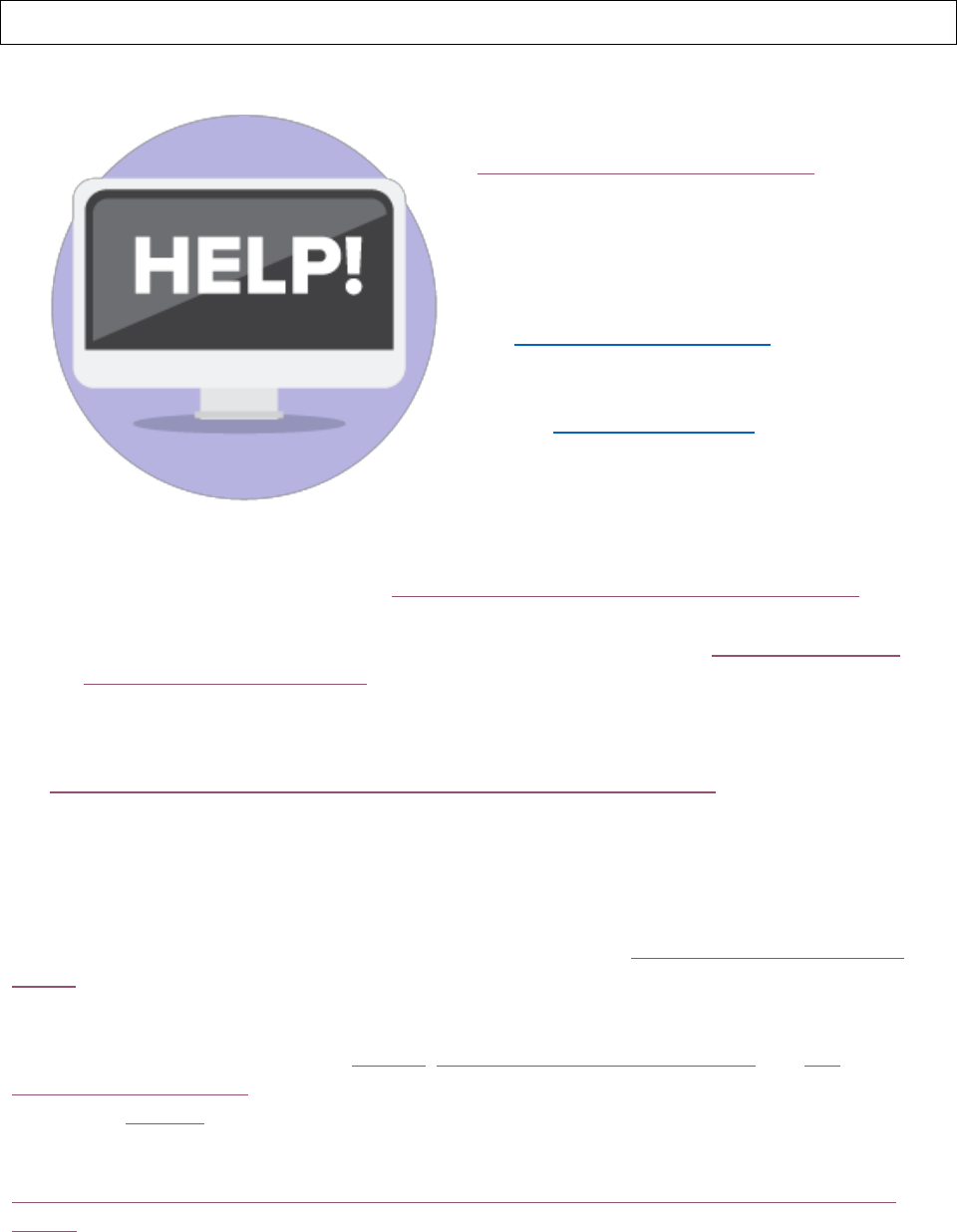
SAM Housing Plan Course | LWVT REVIEW | 5/31/22
64
RESOURCES
Housing Counselors
The Consumer Financial Protection Bureau offers a
list of housing counselors in your area who can
provide advice about the homebuying process,
renting and other information related to housing.
(There may be a fee for services.)
Cost-of-Living Calculators
• CNN Cost of Living calculator from CNN Money.
This calculator lets you perform a U.S. city-to-city
comparison to compare how far your salary will go.
• The Living Wage Calculator estimates the cost
of living including some common expenses for a
particular community.
Home Searches
• The U.S. Census regularly releases Housing Vacancies and Homeownership information on its
website that includes press release summaries and information on rental vacancy rates.
• The U.S. Department of Housing and Urban Development (HUD) has a Fair Market Rent and
Income Limits Summary System that provides information about rental prices and historical
trends.
General Housing Information
The U. S. Department of Housing and Urban Development (HUD) offers a guide for helping you shop for
a loan, understanding your rights and defining mortgage terminology, and gives you a worksheet for
comparing loans.
New Mortgage Regulations
New mortgage process regulations went into effect in October 2015. If it’s been a while since you were
in the home-buying arena, see how these regulations help you at the Consumer Financial Protection
Bureau website.
Special Lending Programs
Read more about the various loans at USA.gov, U.S. Department of Veterans Affairs, and U.S.
Department of Agriculture. You also can find more information about other federal, state and local
programs at HUD.gov.
Renter Rights
The U.S. Department of Housing and Urban Development (HUD) offers state-by-state assistance for
renters

SAM Housing Plan Course | LWVT REVIEW | 5/31/22
65
Sample Amortization Table
U.S.MortgageCalculator.org offers an easy way to see how mortgage payments get applied to the
components just described. You can use their calculator (also available as an Android app) to plug in
numbers for your own mortgage.

SAM Housing Plan Course | LWVT REVIEW | 5/31/22
66
CONGRATULATIONS!
You have completed the Housing course. Check out SAM’s
other free courses to continue your personal finance
journey:
SAM Money Basics
These topics form the foundation that underlies most financial decisions. Take all the Basics courses, or
jump around to get a refresher based on the choices you face right now.
• Credit and Debt
• Employment
• Insurance
• Investing
• Employment
• Spending and Saving
Additional Courses
Explore these SAM courses to develop personalized plans in the following areas:
• My Emergency Fund Plan
• My Transportation Plan
Disclaimers
Throughout this course, any reference to a specific company, commercial product, process or
service does not constitute or imply an endorsement or recommendation by State of Vermont
LiveWell Vermont, Smart About Money (SAM) or the National Endowment for Financial
Education.
These courses and related resources may be used only for nonprofit, noncommercial educational
purposes. LiveWell Vermont and SAM make every effort to ensure the information in these
courses is current, but, over time, new developments as well as legislative and regulatory
changes may date this material. If you discover inaccurate information, please email
